Road Trip USA: Billy Frank Jr. Nisqually National Wildlife Refuge
 Thursday, July 5, 2018 at 2:21AM
Thursday, July 5, 2018 at 2:21AM 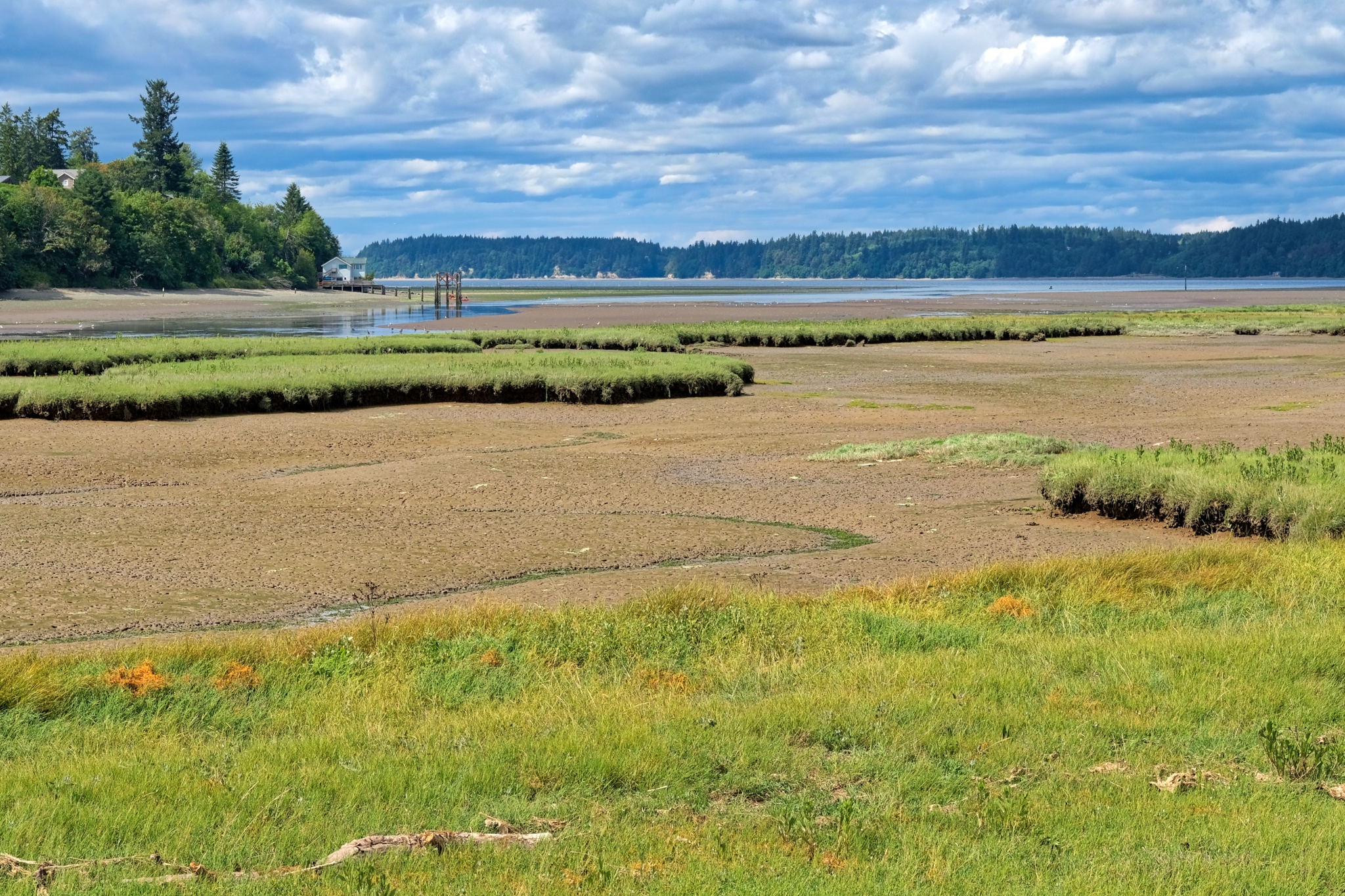 I spent a fine afternoon in the forest, fields, mud flats, and estuary of the Billy Frank Jr. Nisqually National Wildlife Reserve, near Olympia, Washington.
I spent a fine afternoon in the forest, fields, mud flats, and estuary of the Billy Frank Jr. Nisqually National Wildlife Reserve, near Olympia, Washington. I have wanted to go to the Nisqually Wildlife Reserve since I arrived in Washington a few months ago . . . and today was my chance: perfect weather. I passed Woodland Creek, an estuarial creek, several times before and stopped this time . . . it was on the way.
I have wanted to go to the Nisqually Wildlife Reserve since I arrived in Washington a few months ago . . . and today was my chance: perfect weather. I passed Woodland Creek, an estuarial creek, several times before and stopped this time . . . it was on the way.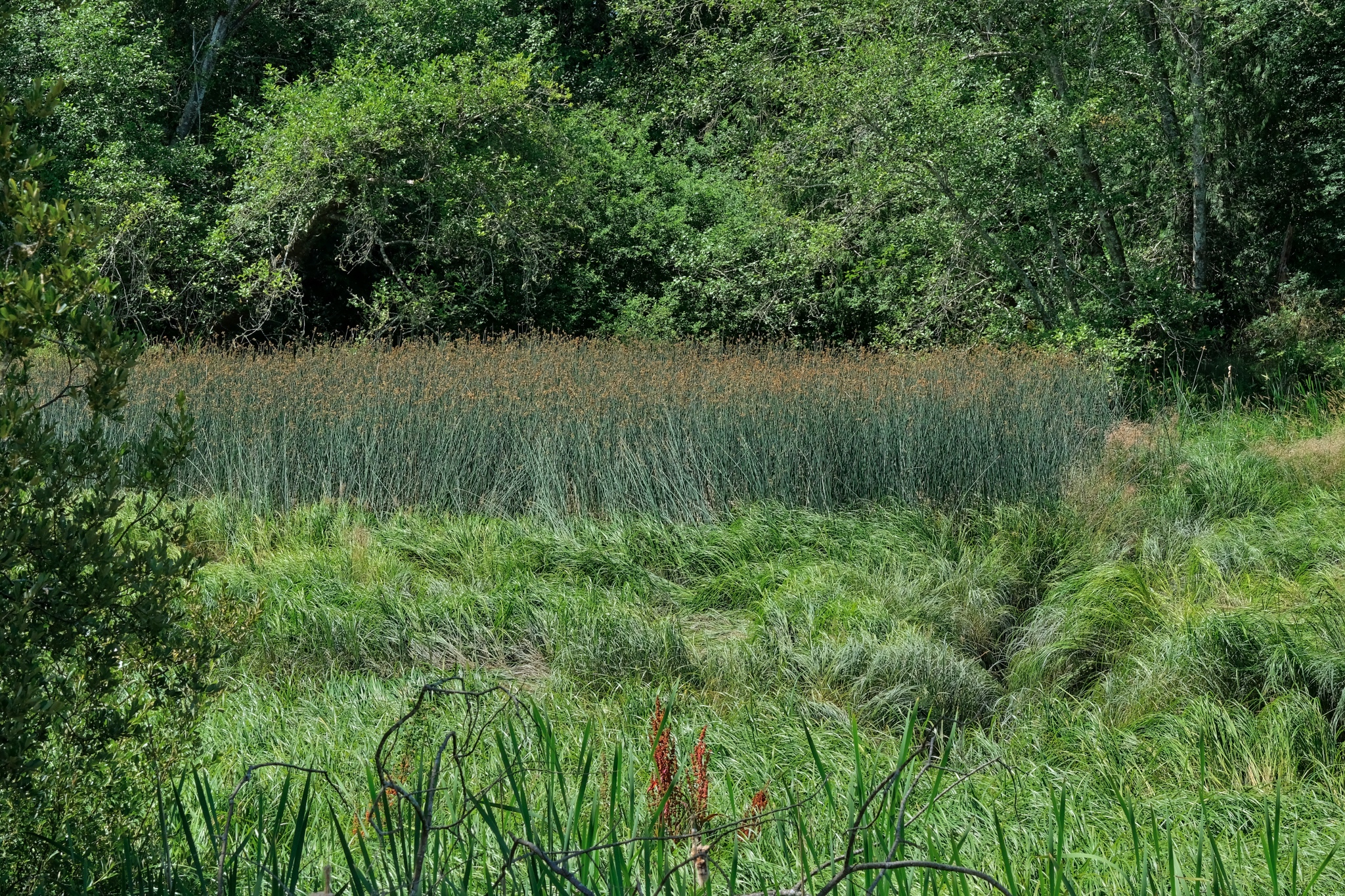 The wetlands grasses were in full mid-summer lushness.
The wetlands grasses were in full mid-summer lushness. The blackberry vines grew among the horsetail ferns everywhere.
The blackberry vines grew among the horsetail ferns everywhere.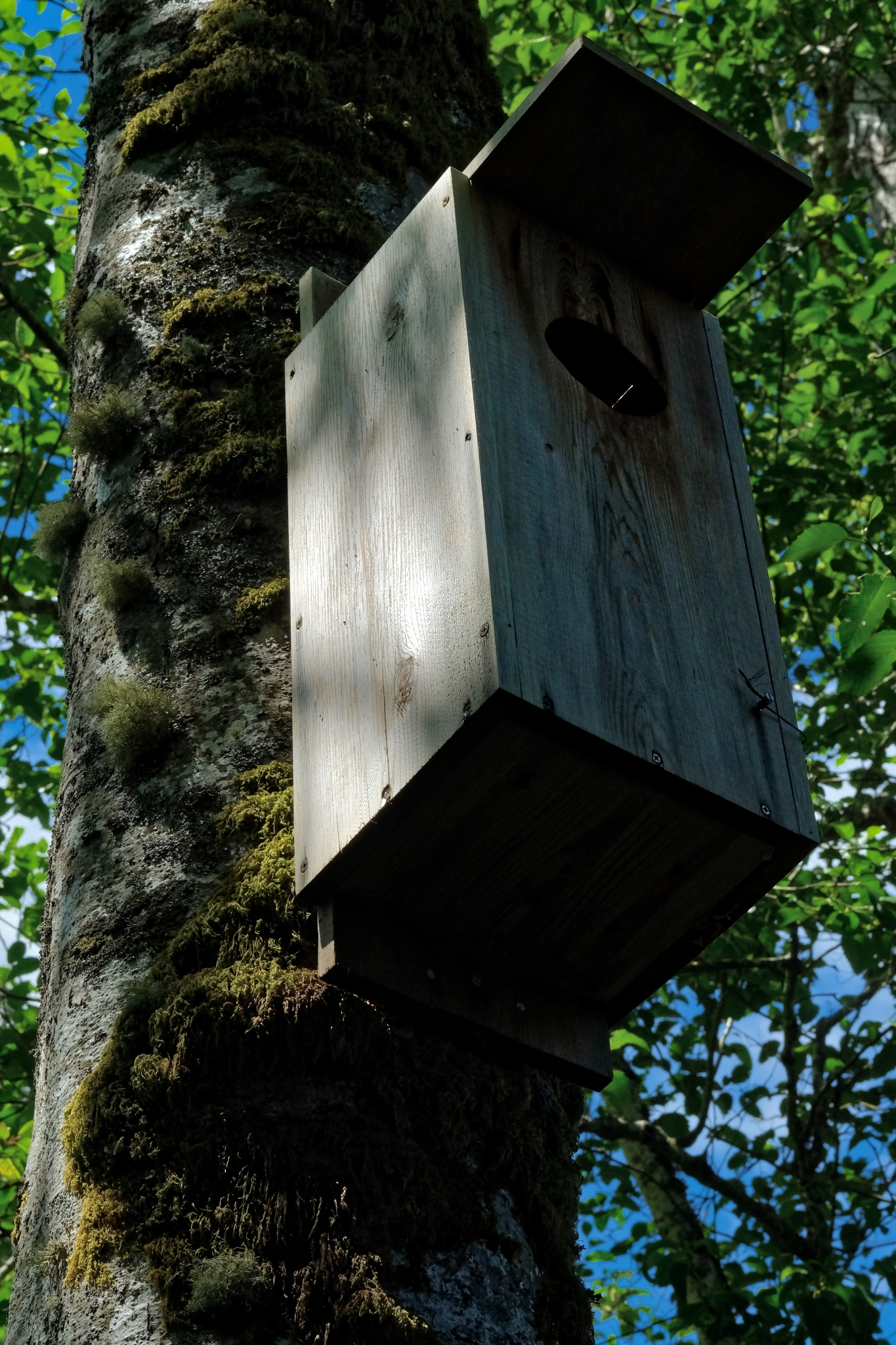 Someone hung a large birdhouse along the path.
Someone hung a large birdhouse along the path.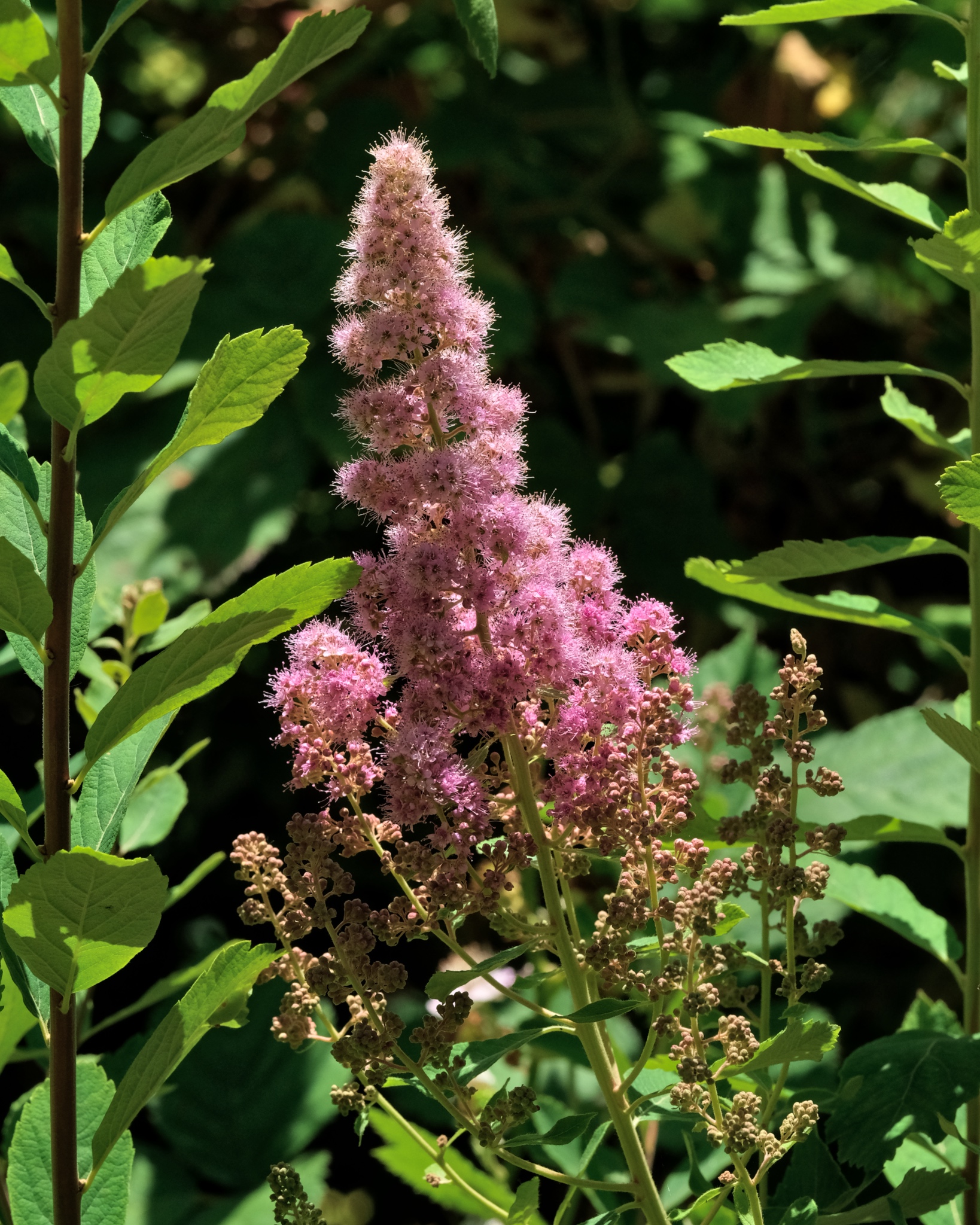 Beautiful summer wildflowers . . . and then a moving distraction along the creek . . .
Beautiful summer wildflowers . . . and then a moving distraction along the creek . . .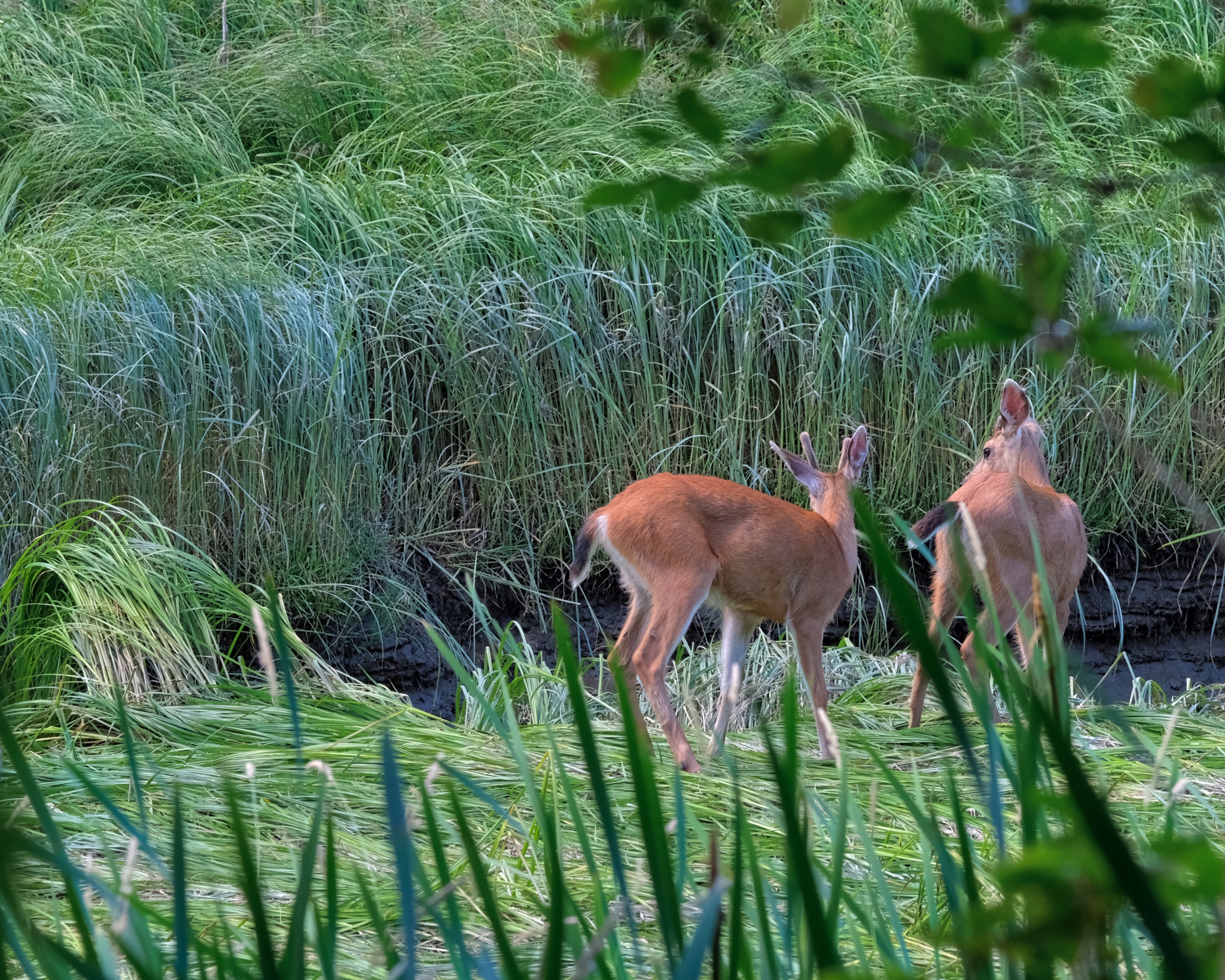 A wonderful surprise . . . . I sat very quietly, not 20 yards away.
A wonderful surprise . . . . I sat very quietly, not 20 yards away. I watched, and photographed, for over a half hour . . .
I watched, and photographed, for over a half hour . . .  They finally moved on along, walking in the Woodland Creek streambed. I followed, but lost sight of them in the dense forest.
They finally moved on along, walking in the Woodland Creek streambed. I followed, but lost sight of them in the dense forest. I wandered back to my camper along a horsetail fern-lined trail, and drove out to the Nisqually estuary.
I wandered back to my camper along a horsetail fern-lined trail, and drove out to the Nisqually estuary. The Nisqually National Wildlife Reserve is comprised of four distinct natural ecological settings: freshwater ponds, wet forests, former farm fields, and estuarial mud flats (I visited during extreme low tide). All areas were fantastic! Here, diving ducks in a freshwater pond.
The Nisqually National Wildlife Reserve is comprised of four distinct natural ecological settings: freshwater ponds, wet forests, former farm fields, and estuarial mud flats (I visited during extreme low tide). All areas were fantastic! Here, diving ducks in a freshwater pond.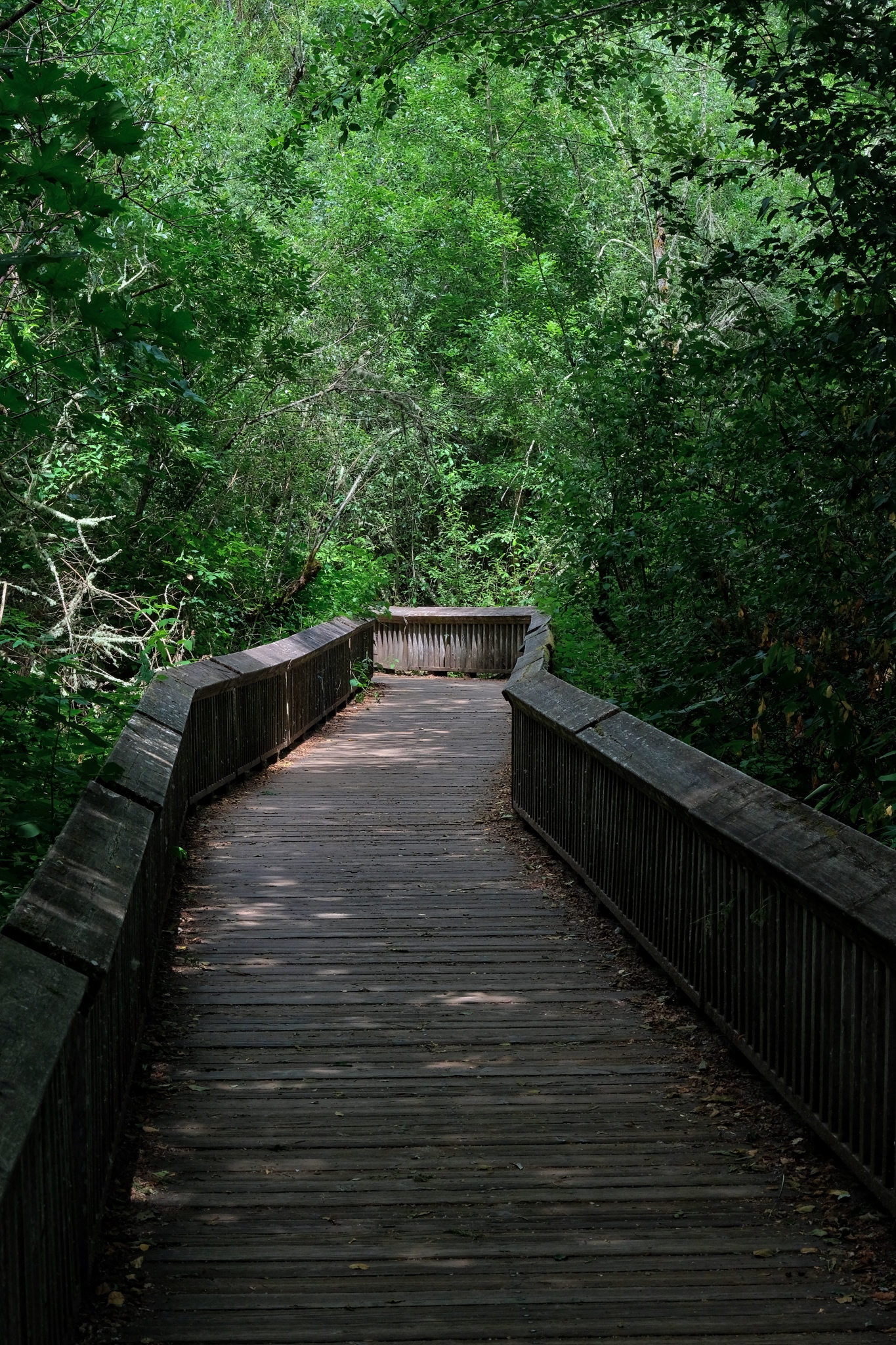 Elevated wooden walkways took visitors out into, and above the delicate ecology of the wet forest.
Elevated wooden walkways took visitors out into, and above the delicate ecology of the wet forest. The elevated walkways afforded wonderful views of the freshwater wetlands.
The elevated walkways afforded wonderful views of the freshwater wetlands. At the edge of the forest were the barns of an old settlement farm.
At the edge of the forest were the barns of an old settlement farm.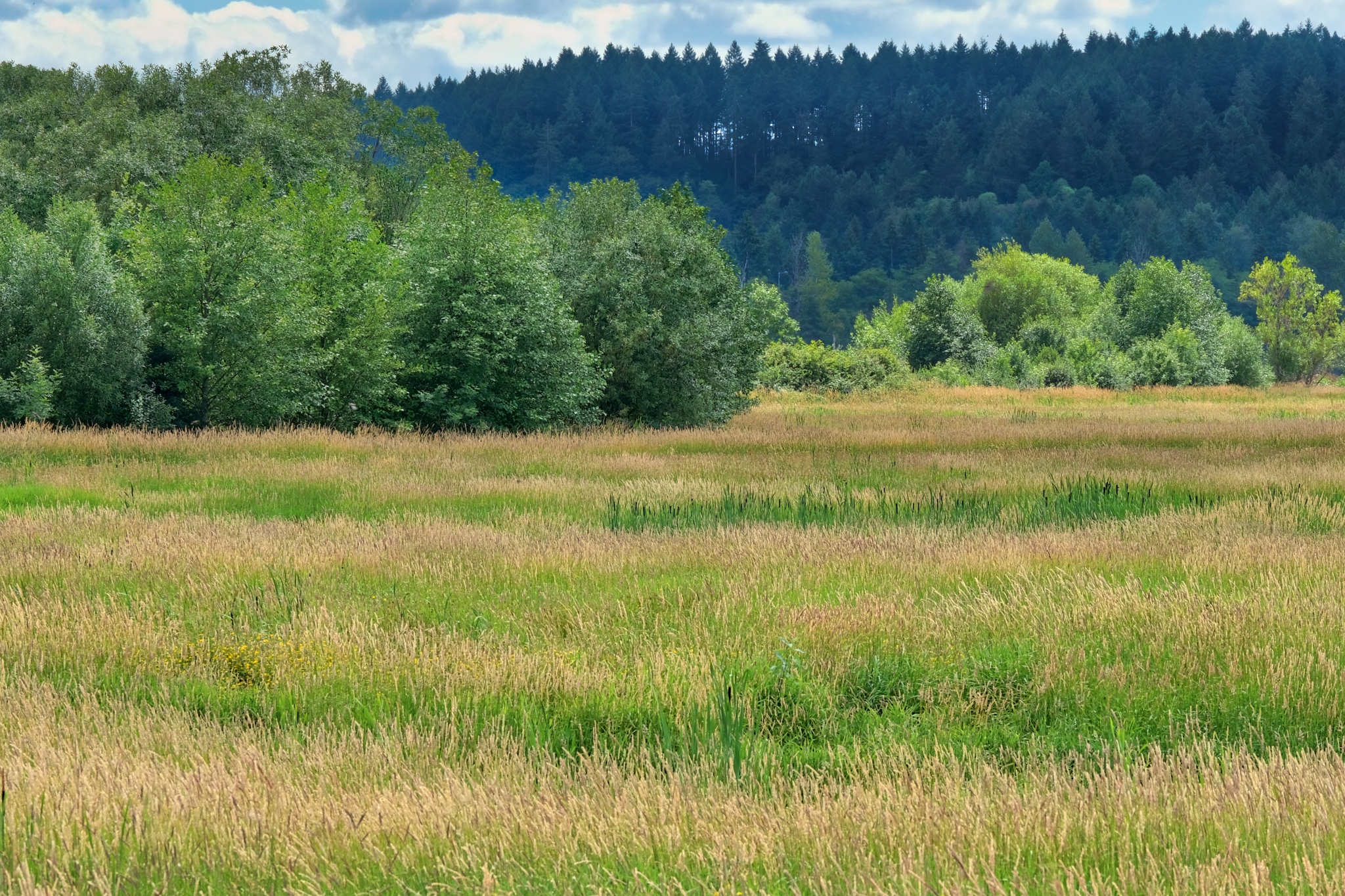 Early settlers expended a huge amount of labor and resources building a system of dykes to drain some of the Nisqually Estuary for farmland. The land now stands uncultivated . . . for the benefit of wildlife habitat.
Early settlers expended a huge amount of labor and resources building a system of dykes to drain some of the Nisqually Estuary for farmland. The land now stands uncultivated . . . for the benefit of wildlife habitat.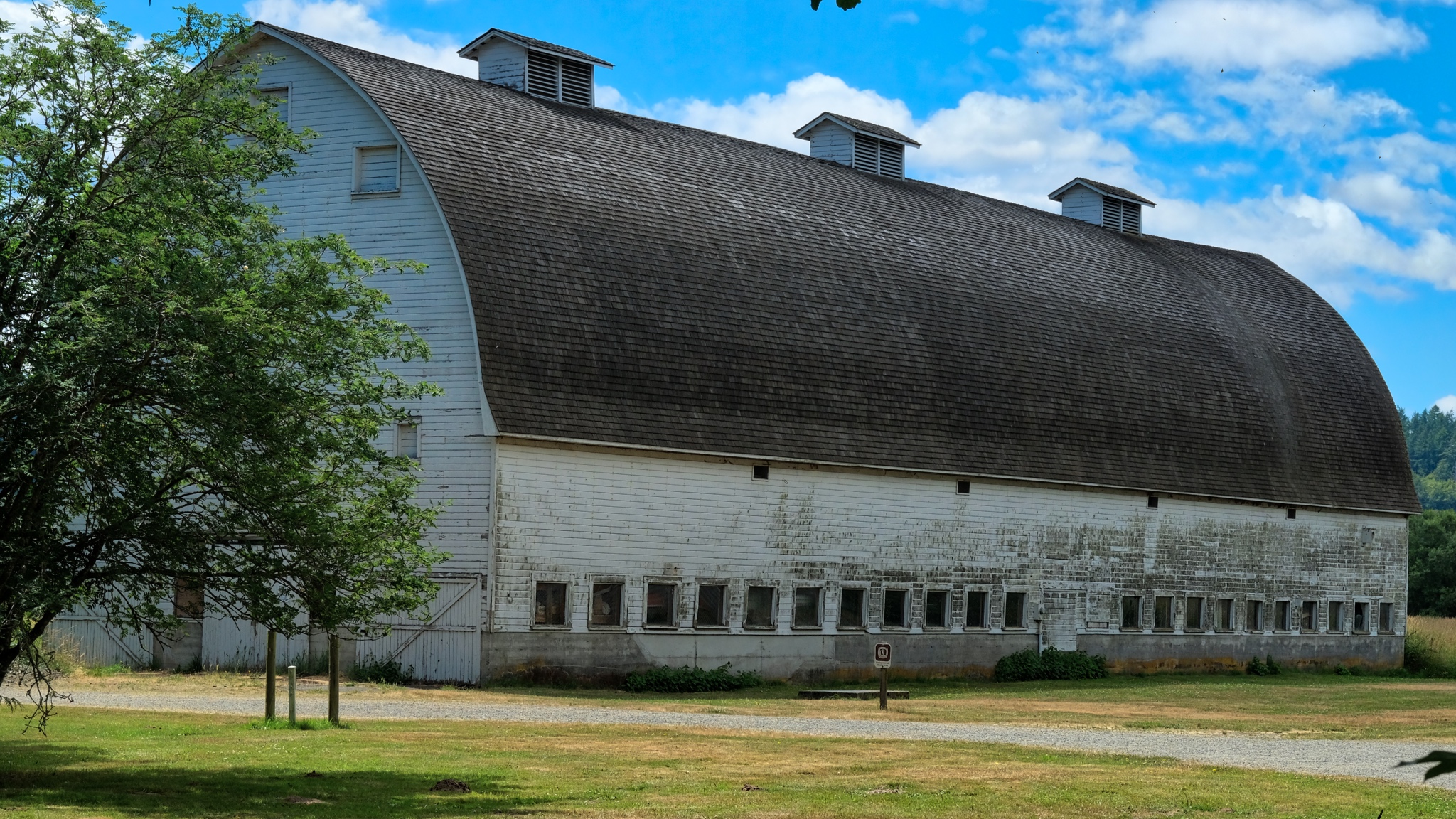 The huge barn, now a part of the National Wildlife Reserve.
The huge barn, now a part of the National Wildlife Reserve. The colors of the fields and surrounding hills were breathtaking!
The colors of the fields and surrounding hills were breathtaking!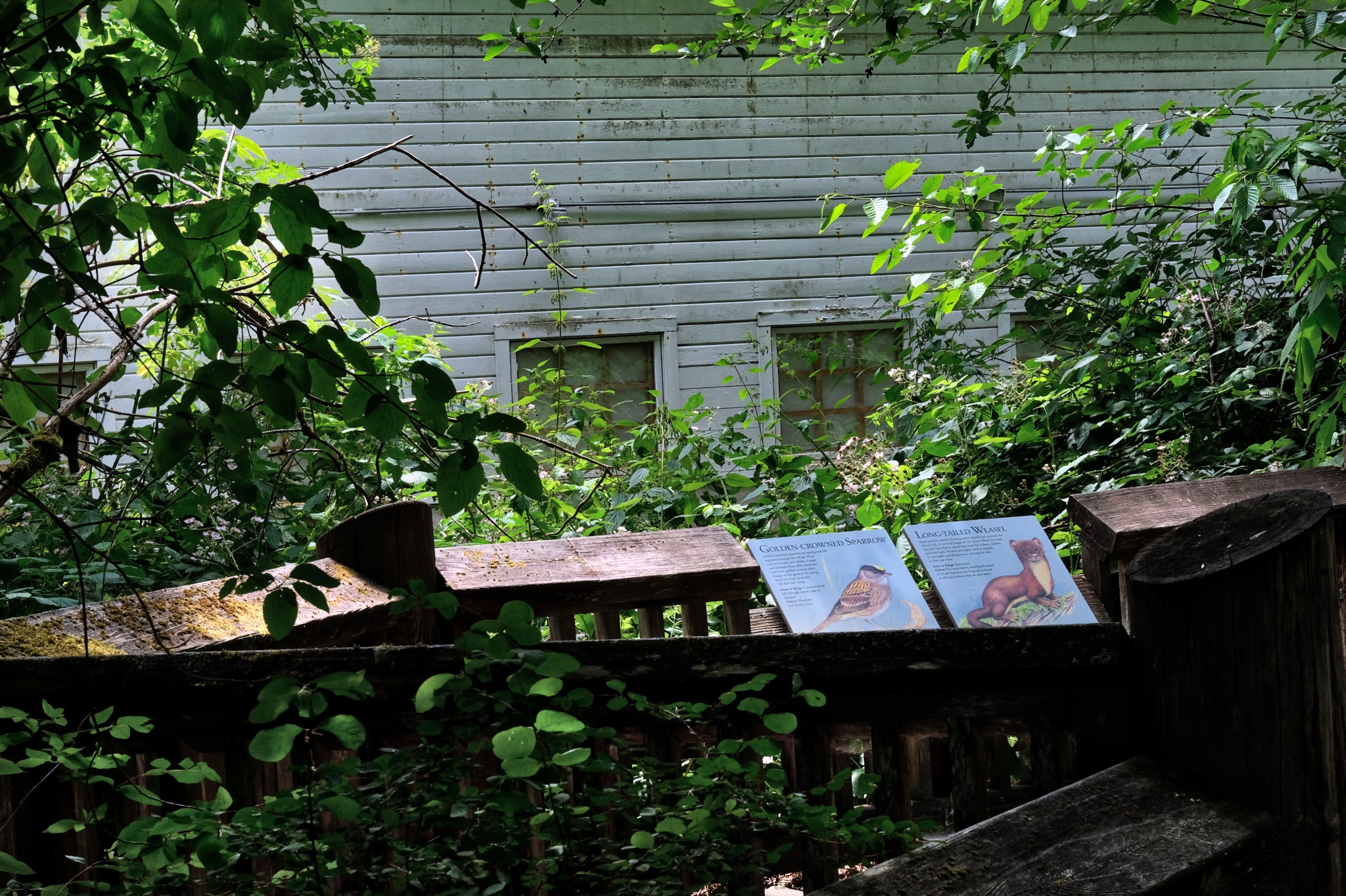 All the paths were well marked with informational signage about the indigenous flora, fauna, and local geology.
All the paths were well marked with informational signage about the indigenous flora, fauna, and local geology.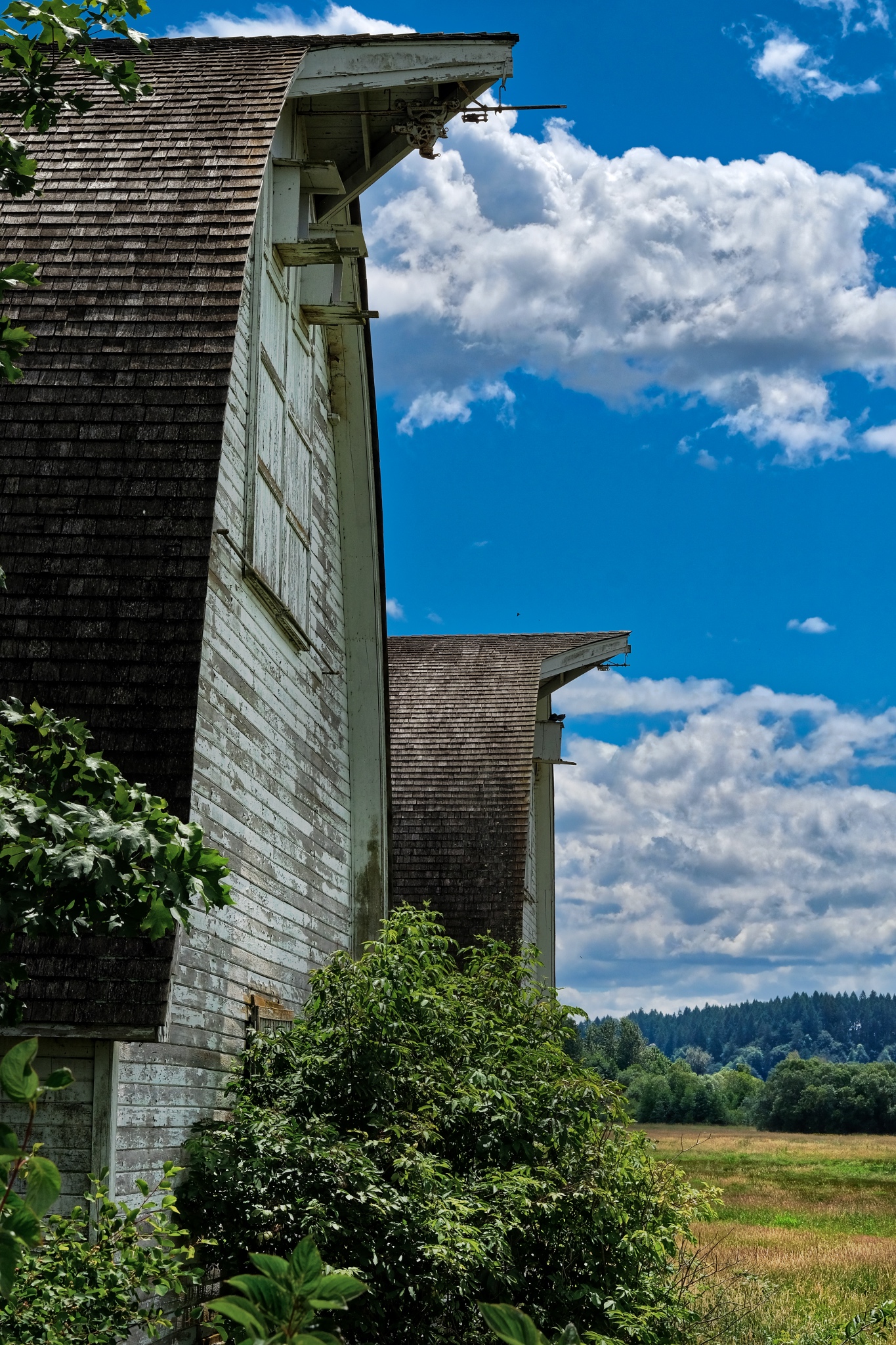 A wonderful angle from which to view the mammoth barns!
A wonderful angle from which to view the mammoth barns! I wandered around some more on the elevated walkways, stopping here and there to take flower photos.
I wandered around some more on the elevated walkways, stopping here and there to take flower photos.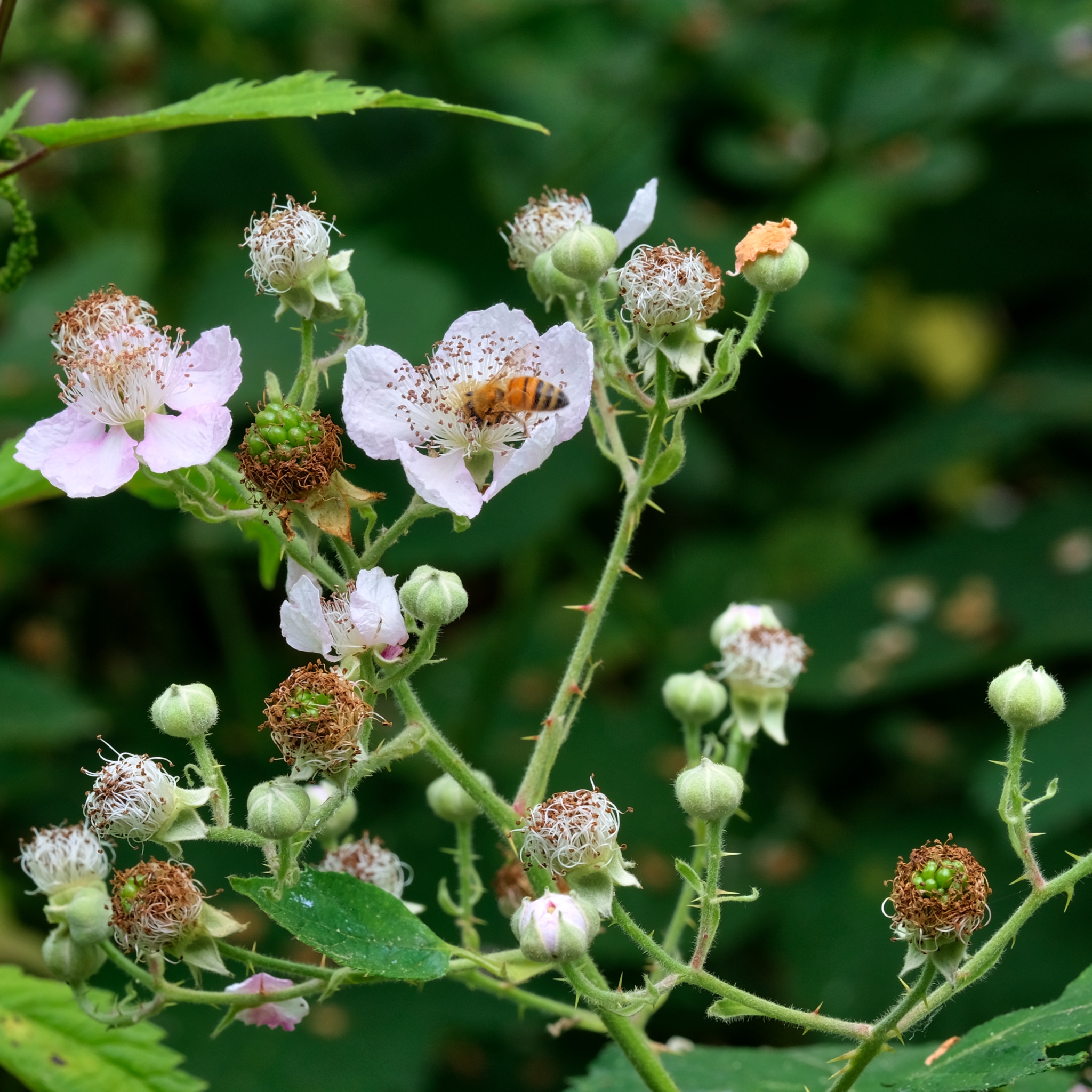 Busy bees . . . and . . .
Busy bees . . . and . . . Busy butterflies too!
Busy butterflies too!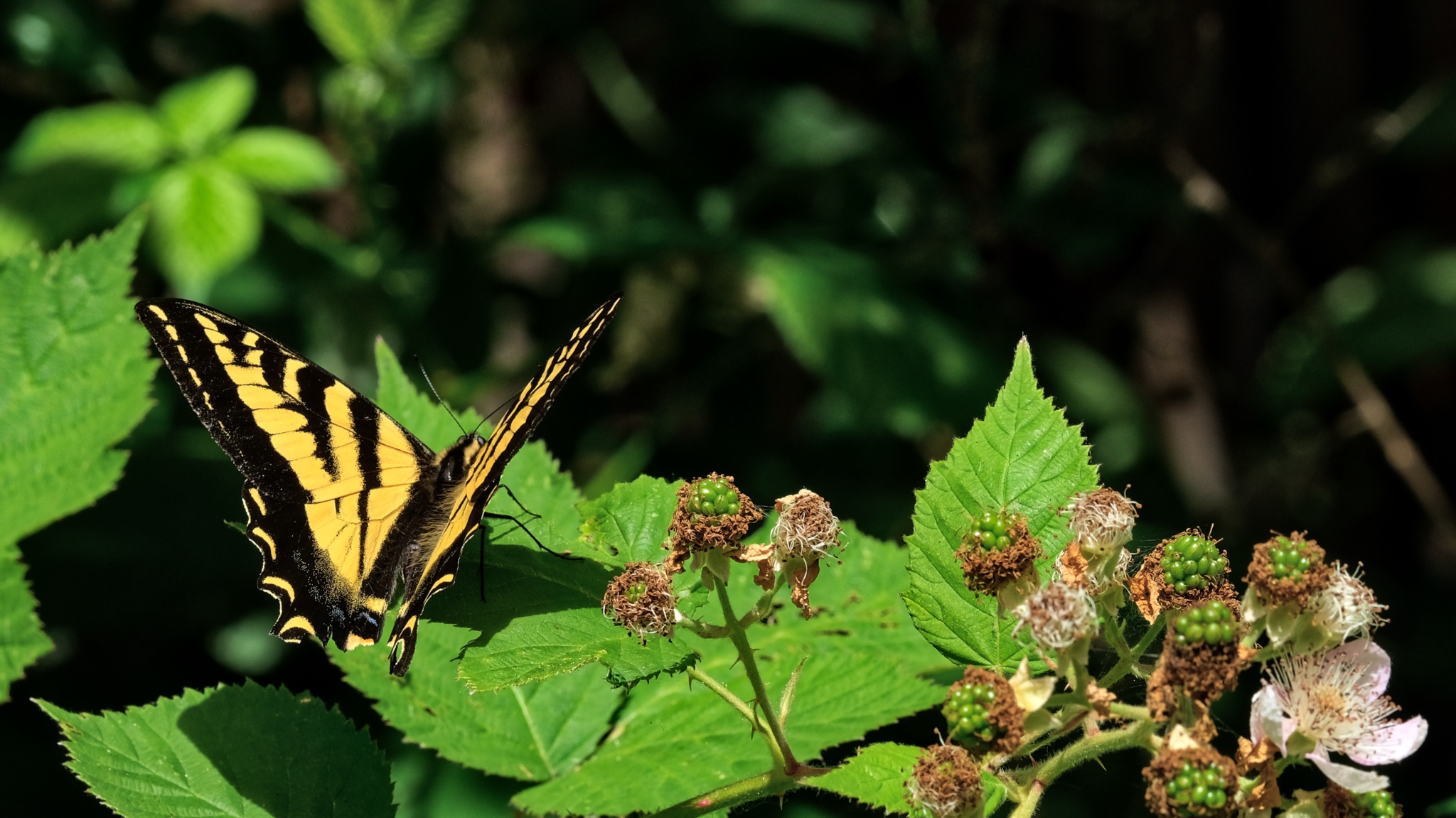 This one seemed to stay around just so I could photograph it!
This one seemed to stay around just so I could photograph it!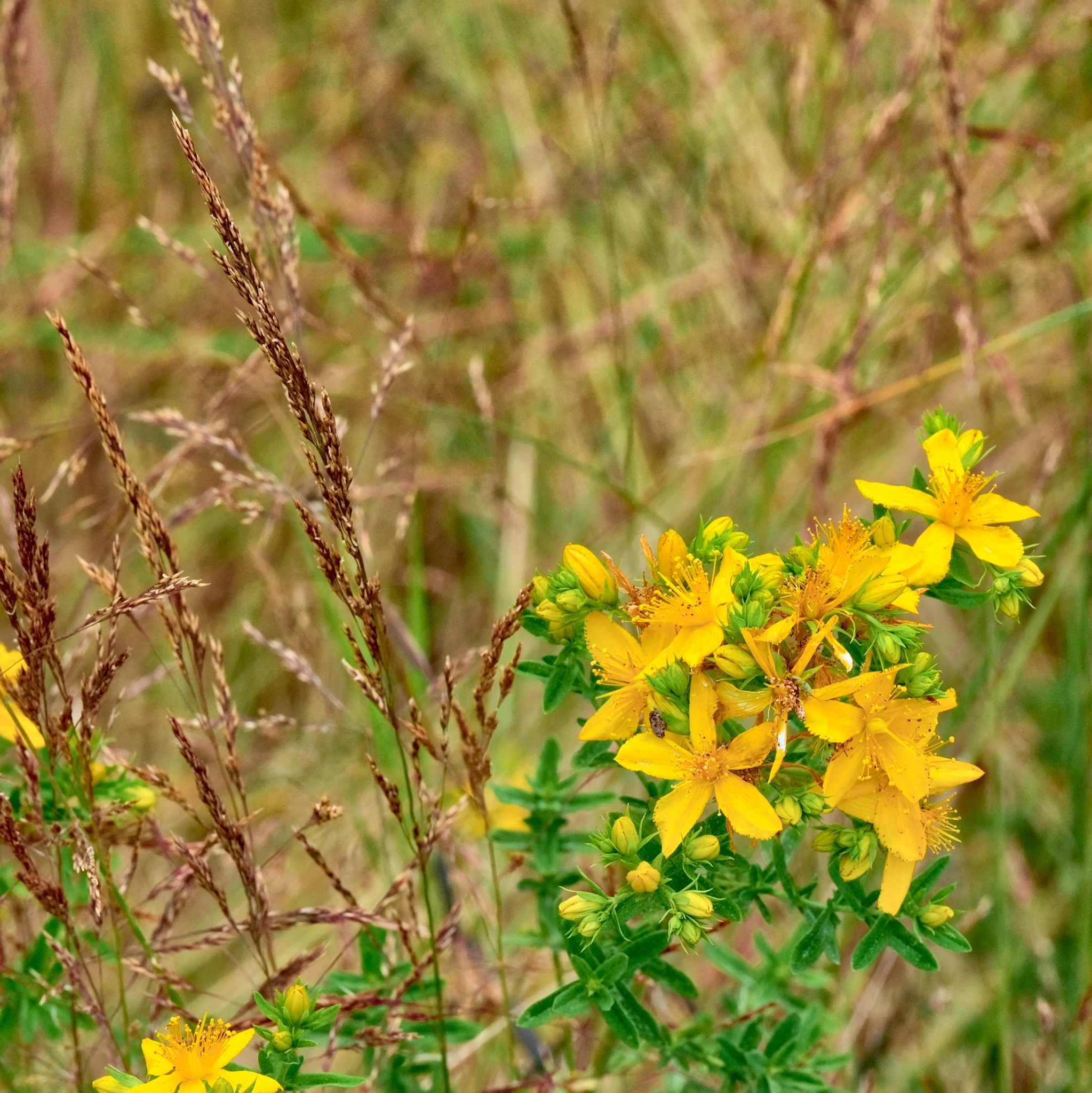 I left the cool shade of the forest for the dry gravel path through the fields and onward toward the estuary . . .
I left the cool shade of the forest for the dry gravel path through the fields and onward toward the estuary . . . The old field drainage canals astride the dyke was full of thick bull rushes.
The old field drainage canals astride the dyke was full of thick bull rushes. Many birds on the forest edge.
Many birds on the forest edge.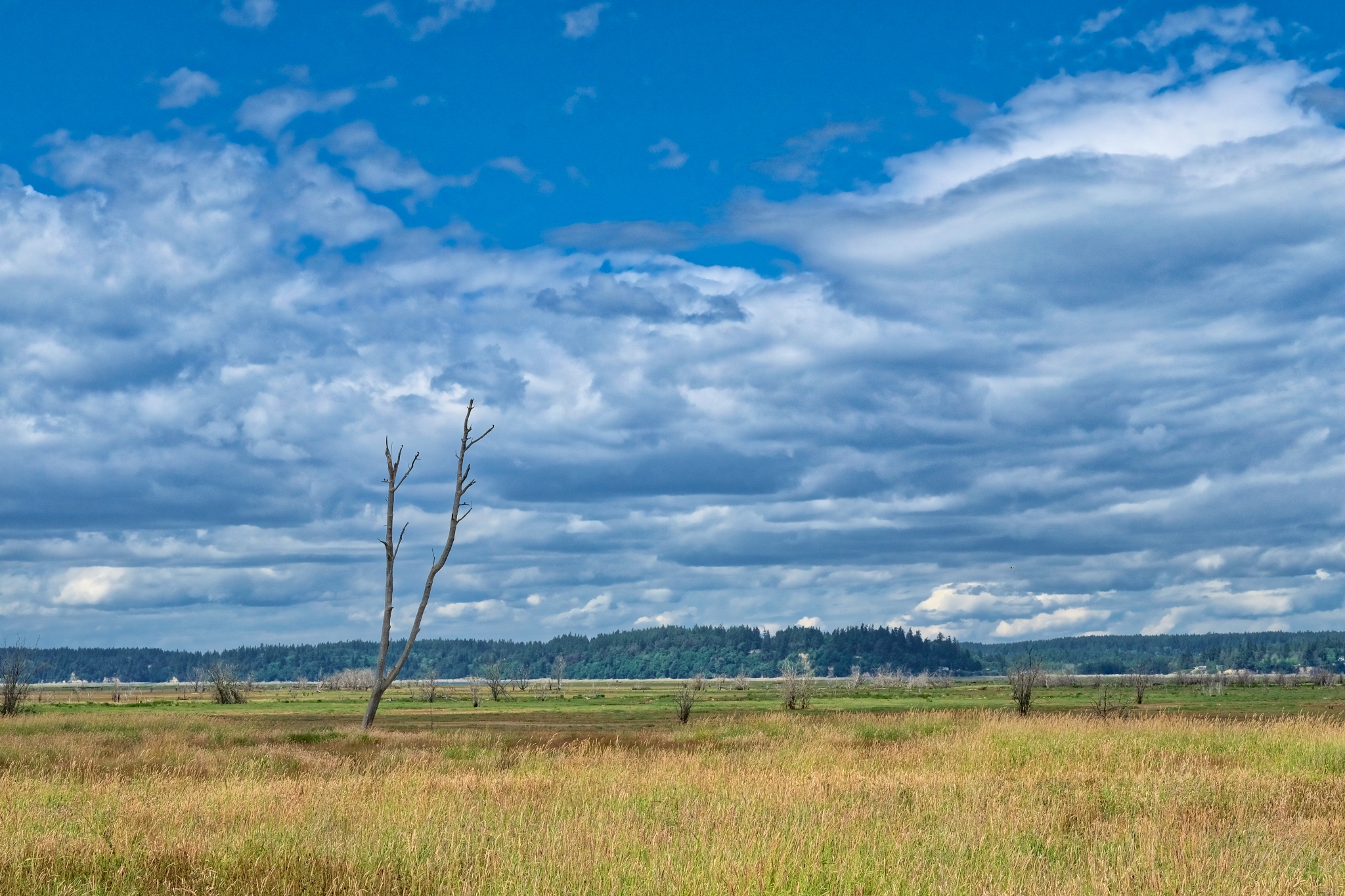 The grassy fields gradually gave way to estuarial flats.
The grassy fields gradually gave way to estuarial flats.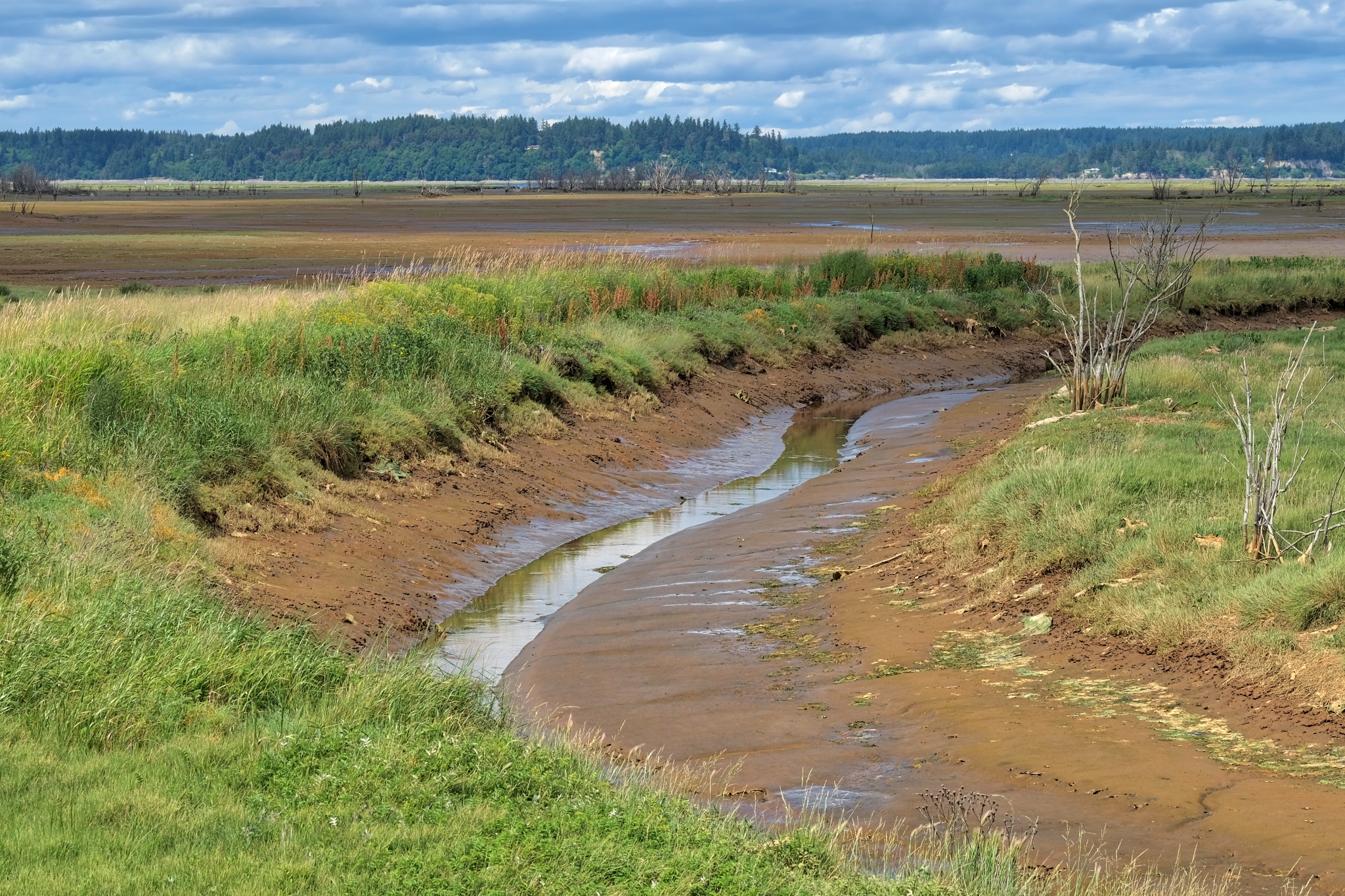 I knew the tide was going to be out when I saw these small bay arterial channels.
I knew the tide was going to be out when I saw these small bay arterial channels.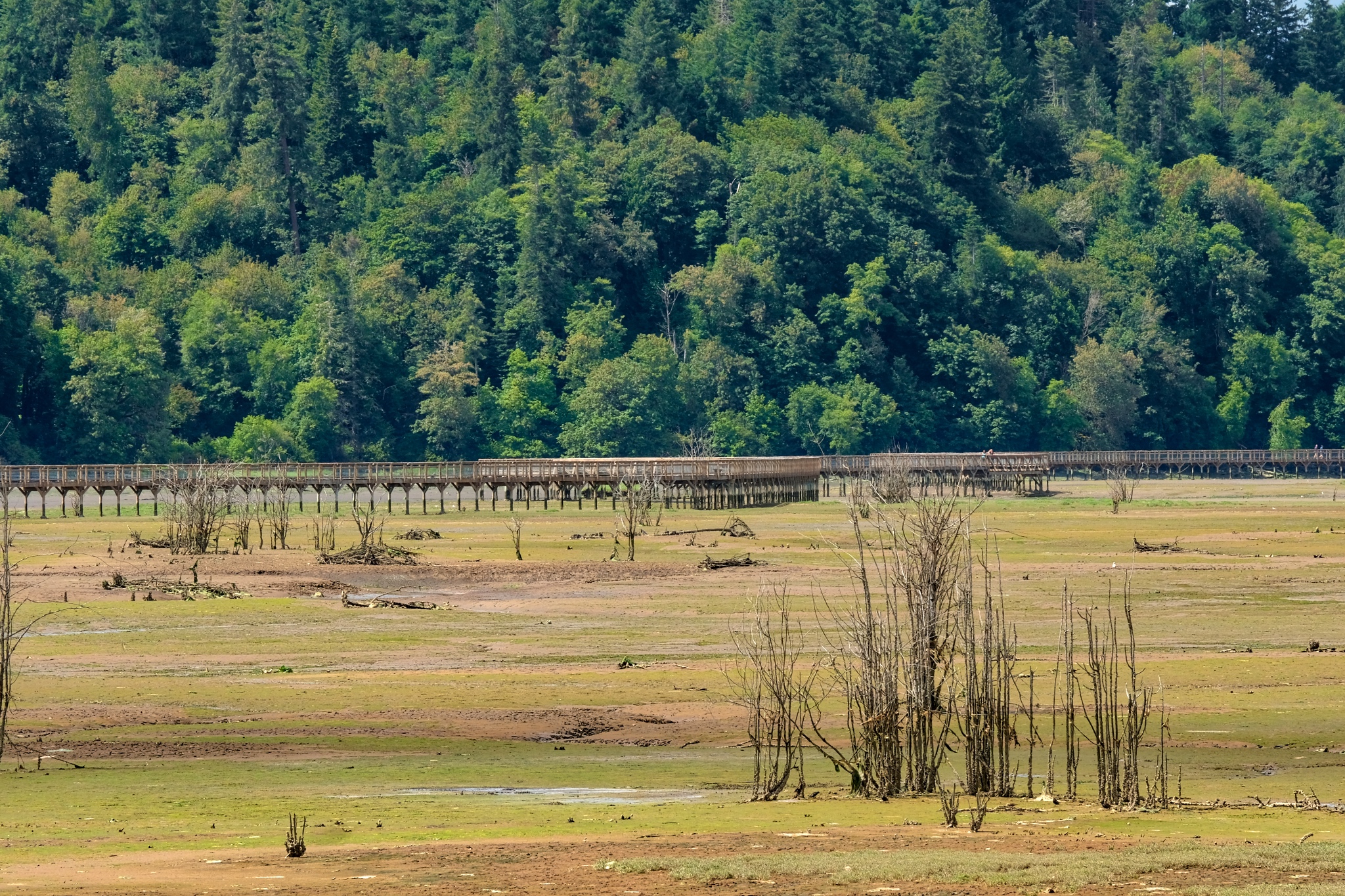 My first view across the wetlands toward the elevated observation walkway.
My first view across the wetlands toward the elevated observation walkway.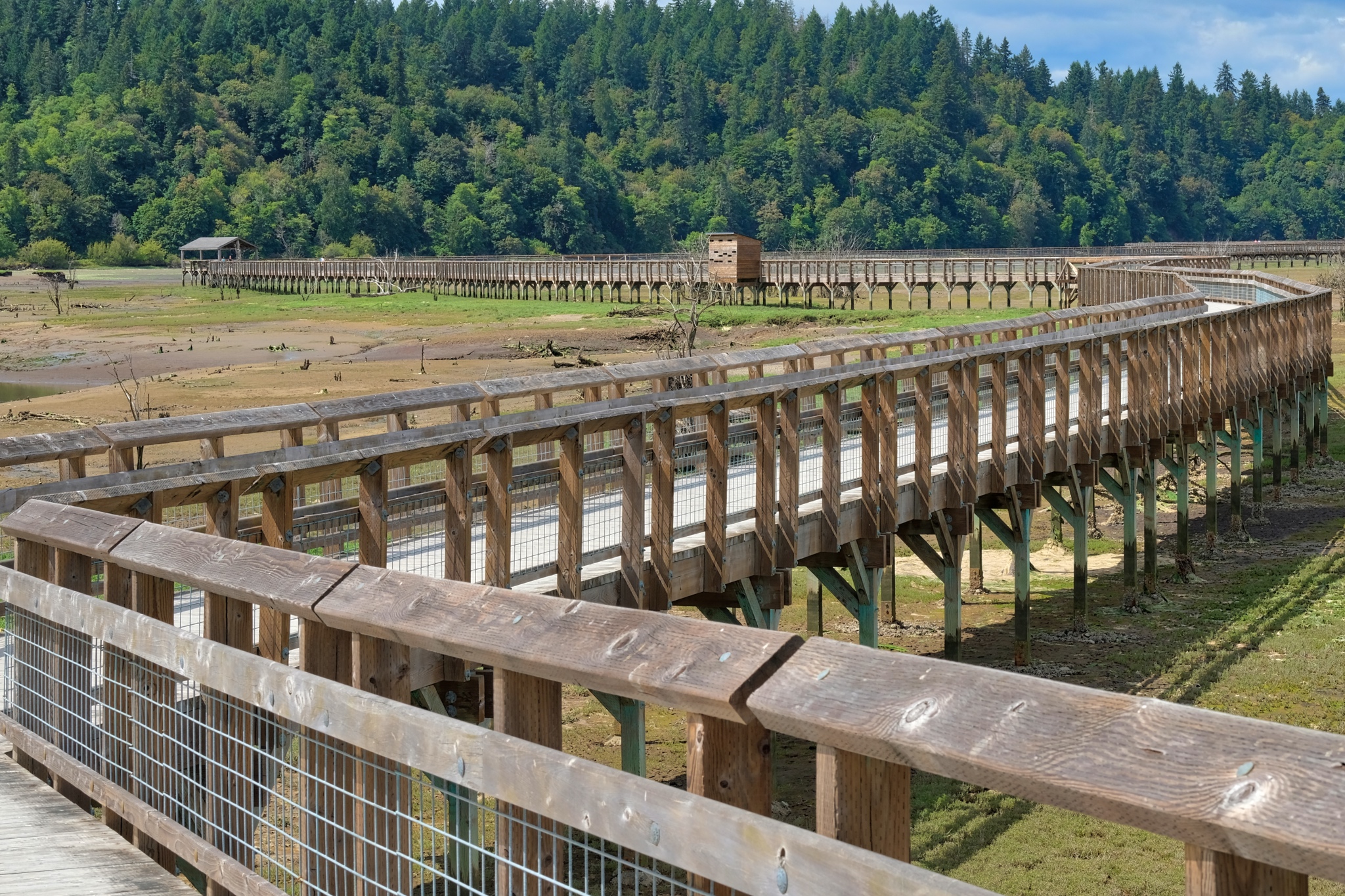 I climbed the ramp up onto the observation walkway . . . an incredible piece wooden construction in its own right.
I climbed the ramp up onto the observation walkway . . . an incredible piece wooden construction in its own right.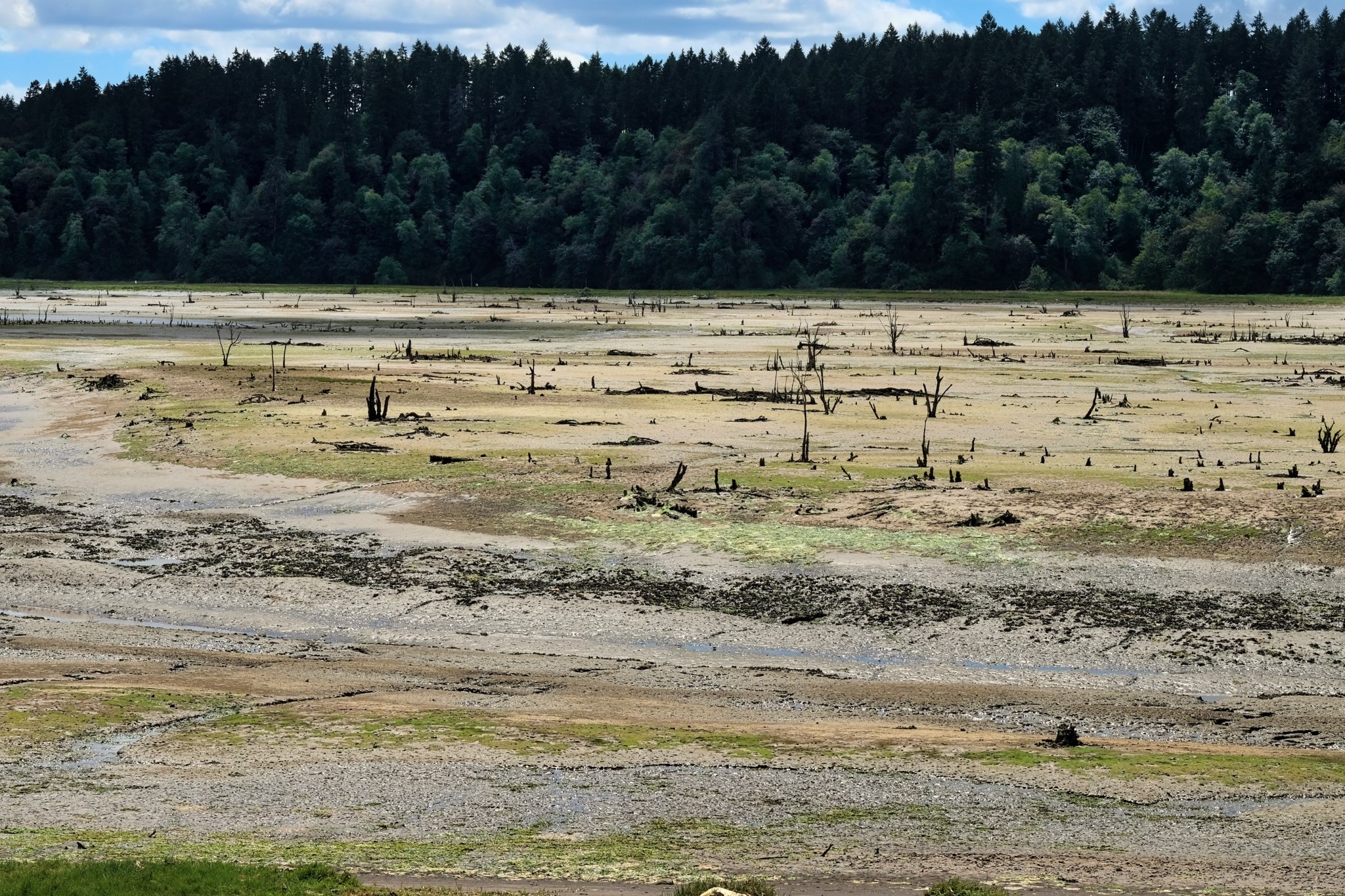 The view back up the Nisqually River across dry sand bars.
The view back up the Nisqually River across dry sand bars.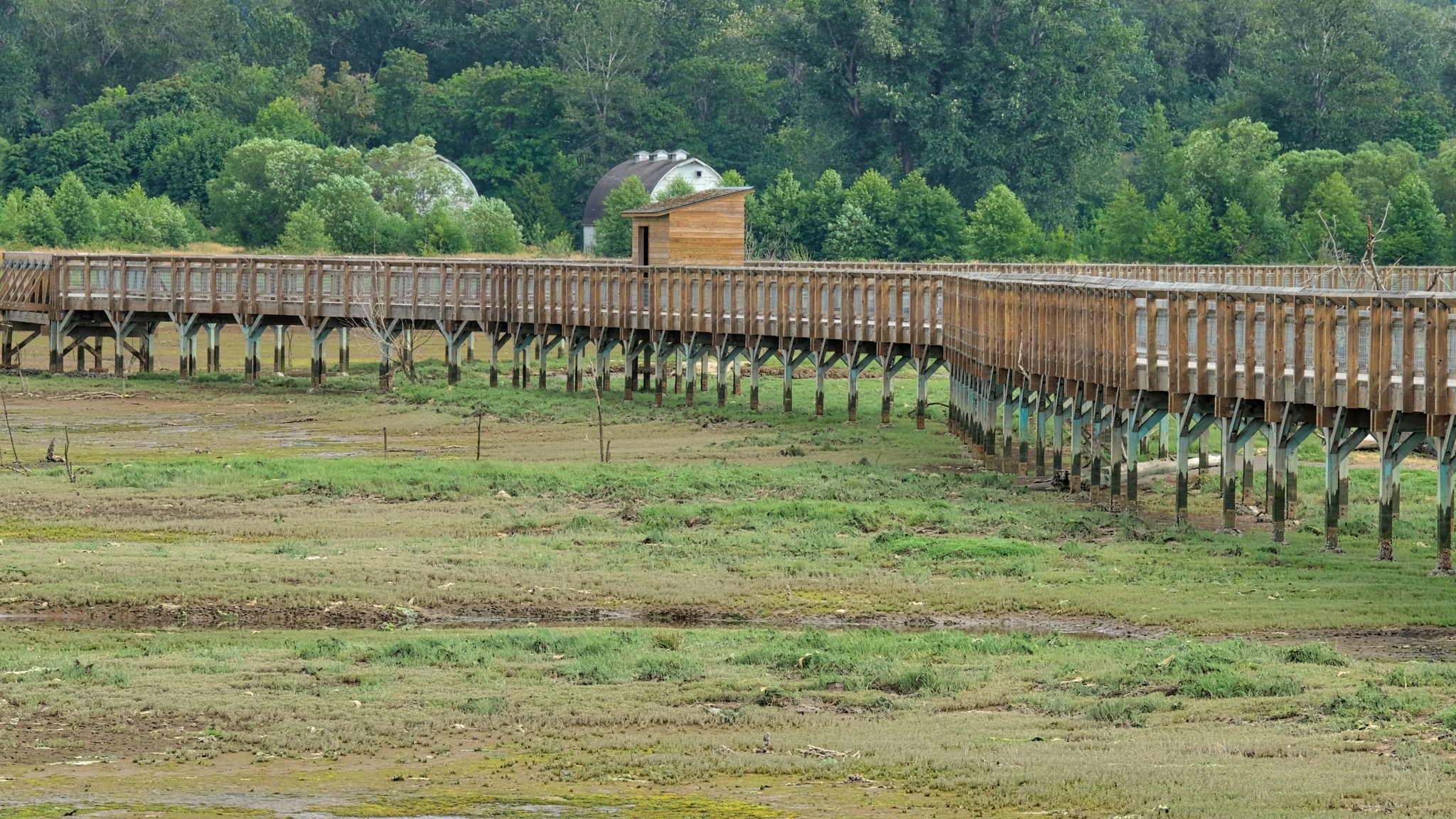 Looking back toward the tree line and the old ban from the walkway.
Looking back toward the tree line and the old ban from the walkway.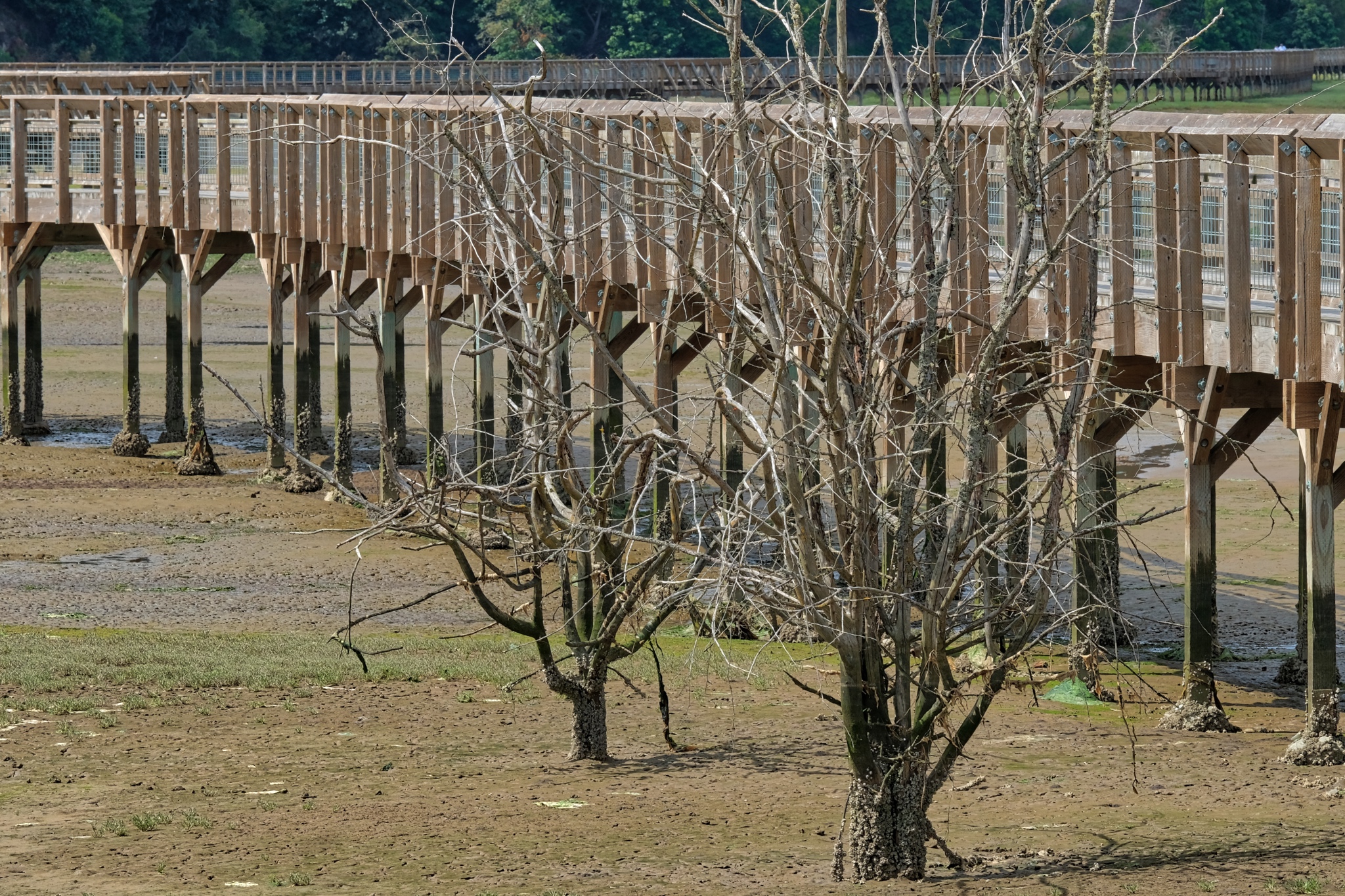 The sights from the walkway were both strange and captivating. You cannot visit these low tide estuarial landscapes any other way.
The sights from the walkway were both strange and captivating. You cannot visit these low tide estuarial landscapes any other way.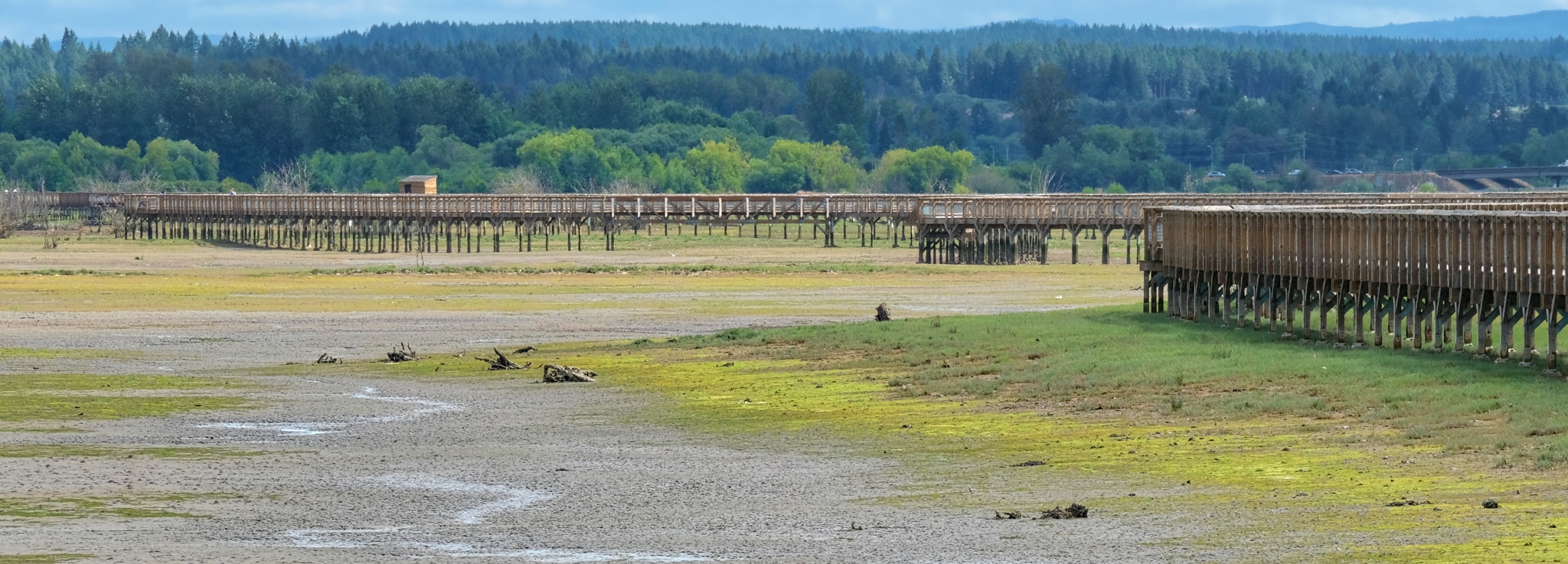 A mega-walkway!
A mega-walkway! The further out I went the more it became an exposed bay floor.
The further out I went the more it became an exposed bay floor.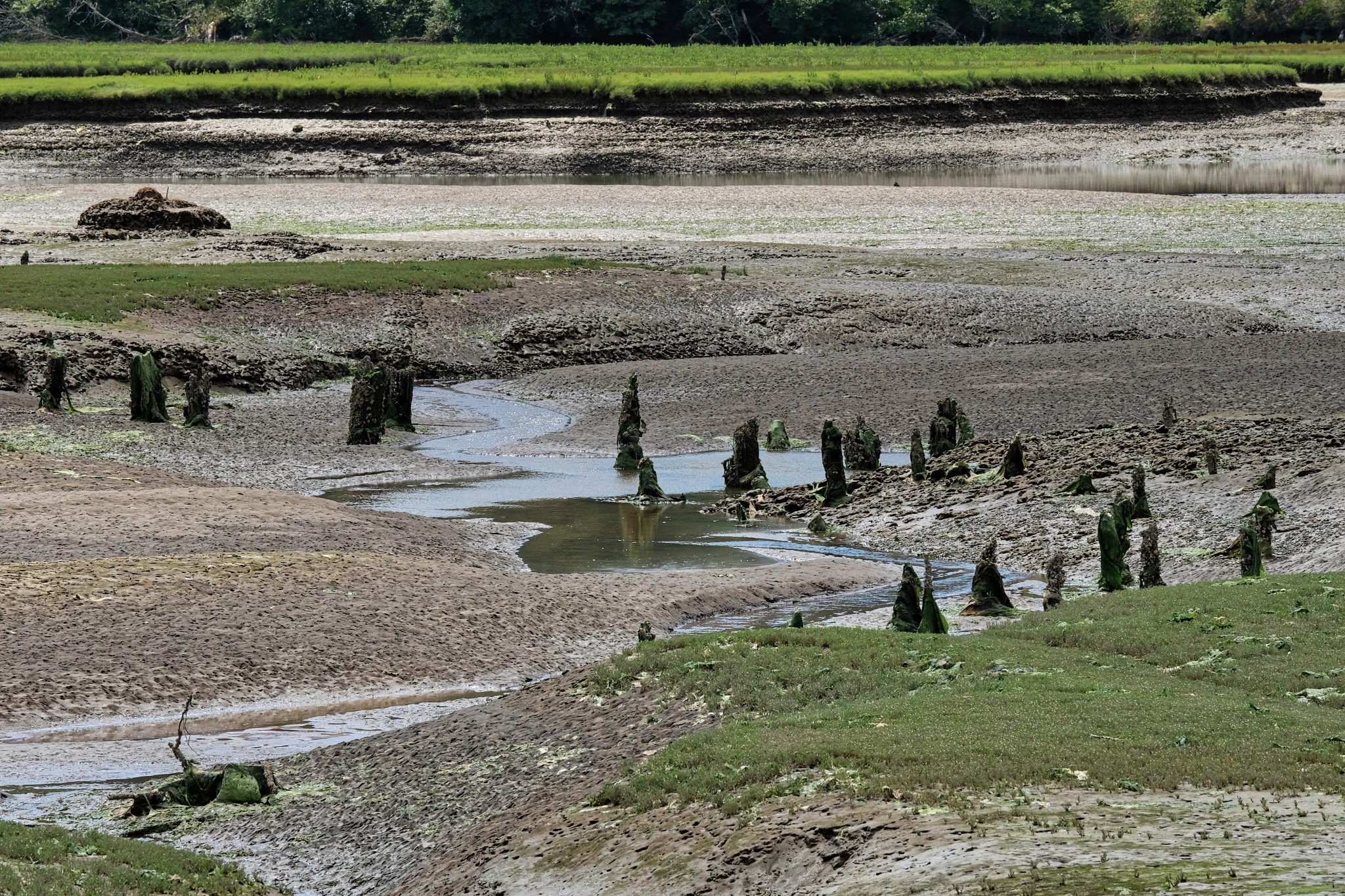 On one side of the walkway was the Nisqually River . . . with evidence of the pilings of old commercial structures.
On one side of the walkway was the Nisqually River . . . with evidence of the pilings of old commercial structures.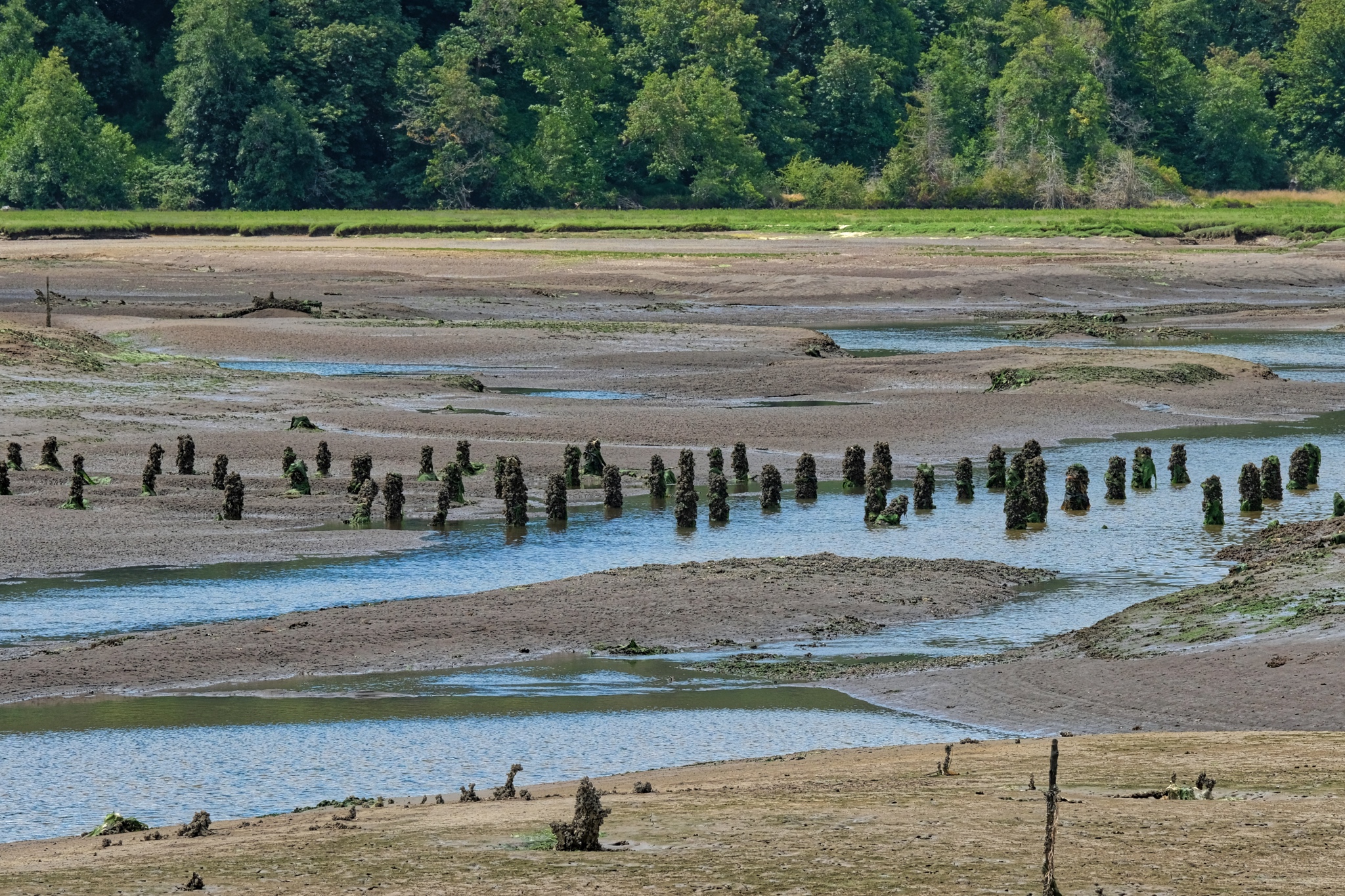 Some commercial project lost to time.
Some commercial project lost to time.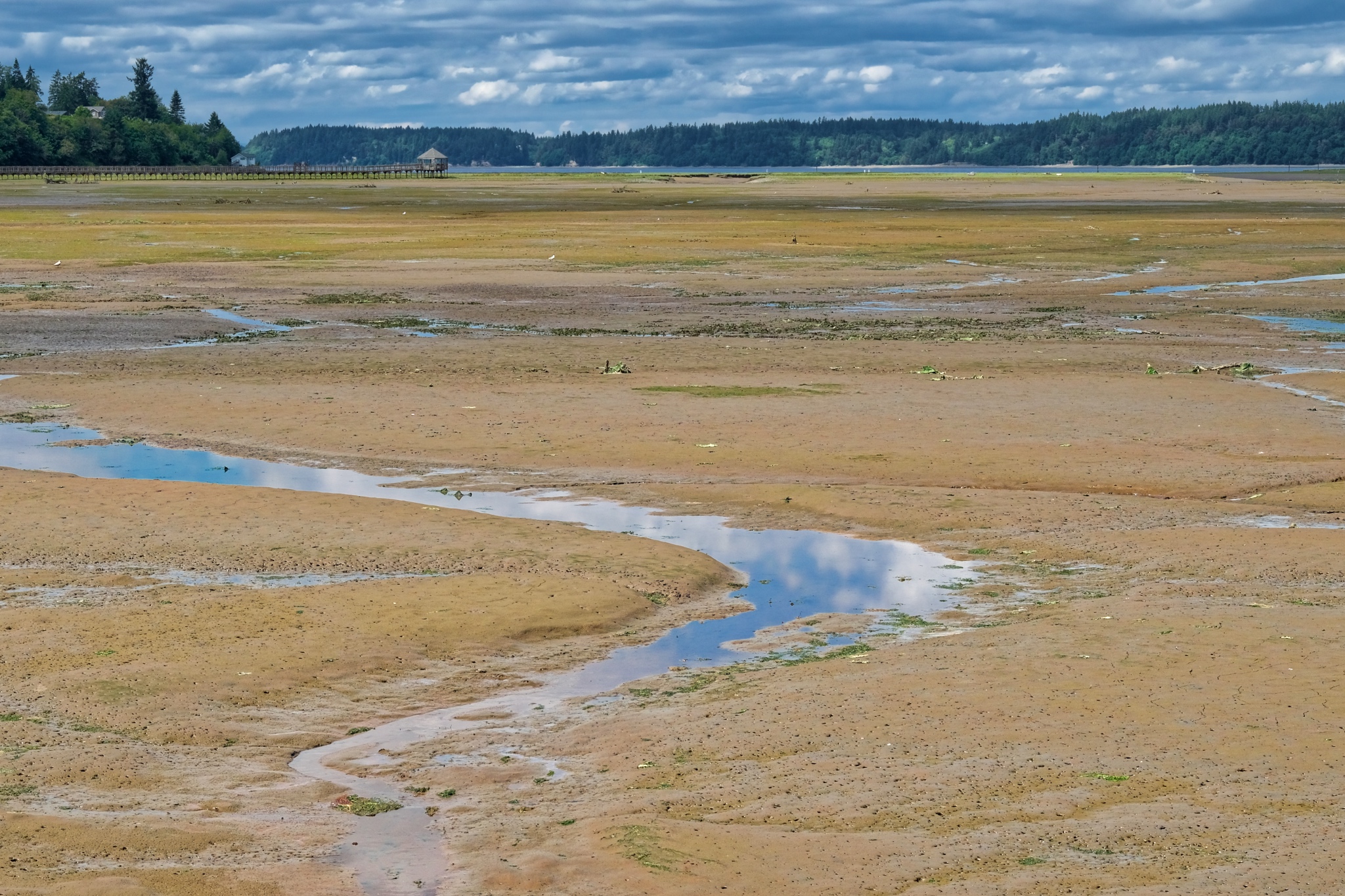 On the other side of the walkway was a vista across vast mud flats . . . loaded with very interesting objects!
On the other side of the walkway was a vista across vast mud flats . . . loaded with very interesting objects!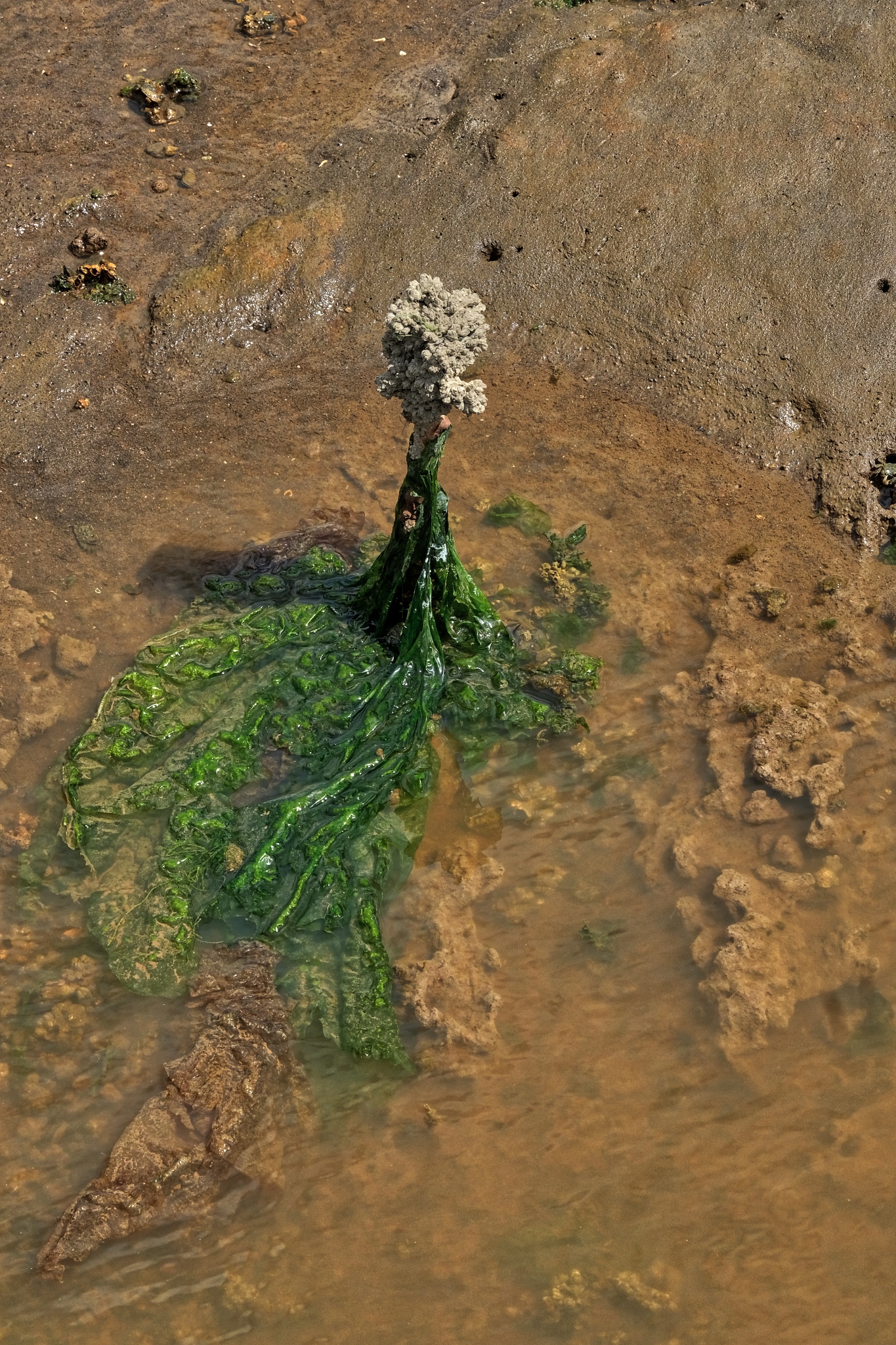 Strange things . . . . and, unfortunately all too many plastic bags!
Strange things . . . . and, unfortunately all too many plastic bags! There were not as many birds as I somehow had expected . . . but there were birds.
There were not as many birds as I somehow had expected . . . but there were birds.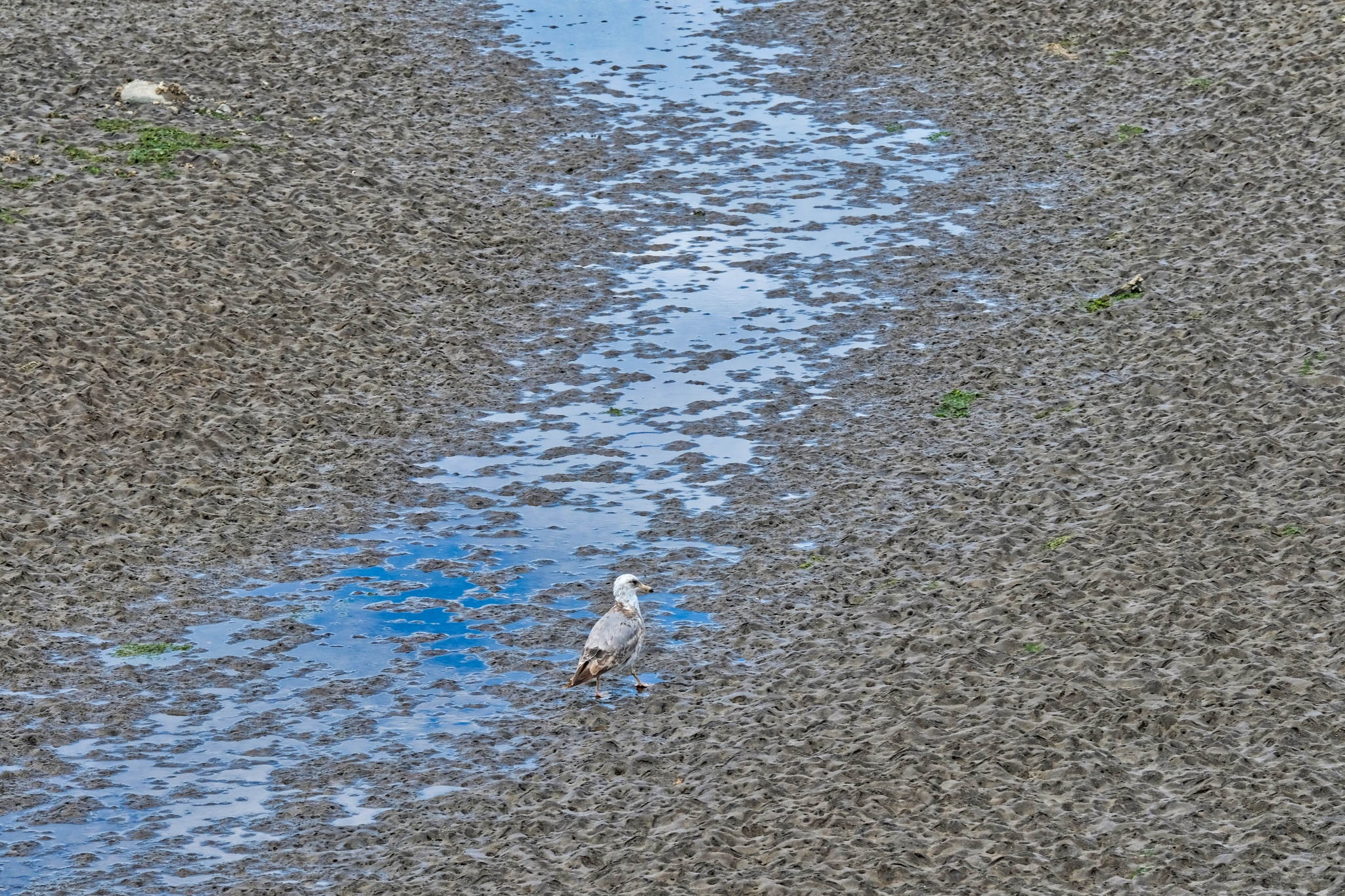 A gull loitering in the muddy estuary . . .
A gull loitering in the muddy estuary . . . 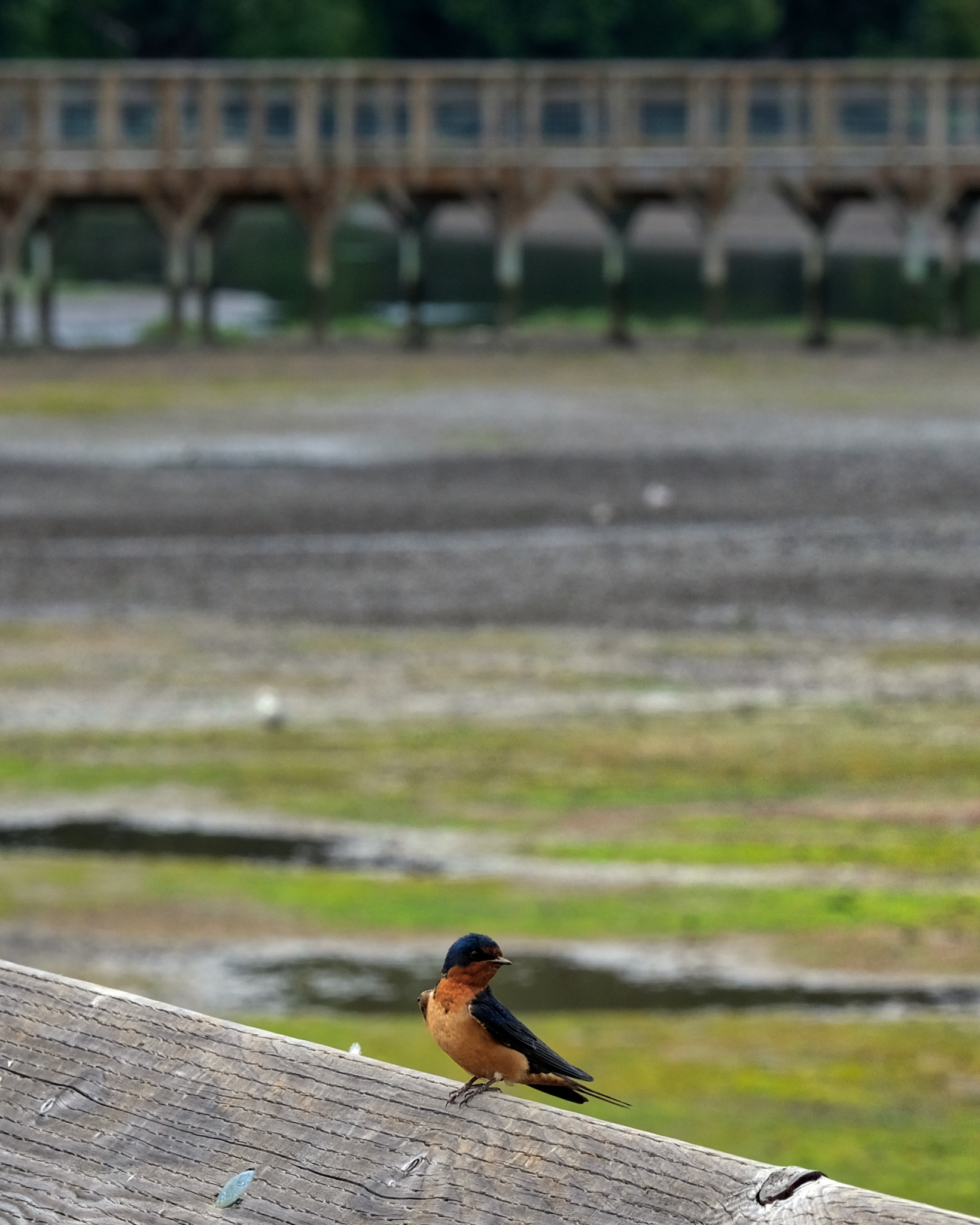 A friendly little fellow!
A friendly little fellow! Evidence of sea level rise: the old level of the fields and 'dry' flats are eroding away with only a few small 'islands' of the old land level left. Only a few inches of sea level rise can cause this kind of erosion of wetlands.
Evidence of sea level rise: the old level of the fields and 'dry' flats are eroding away with only a few small 'islands' of the old land level left. Only a few inches of sea level rise can cause this kind of erosion of wetlands.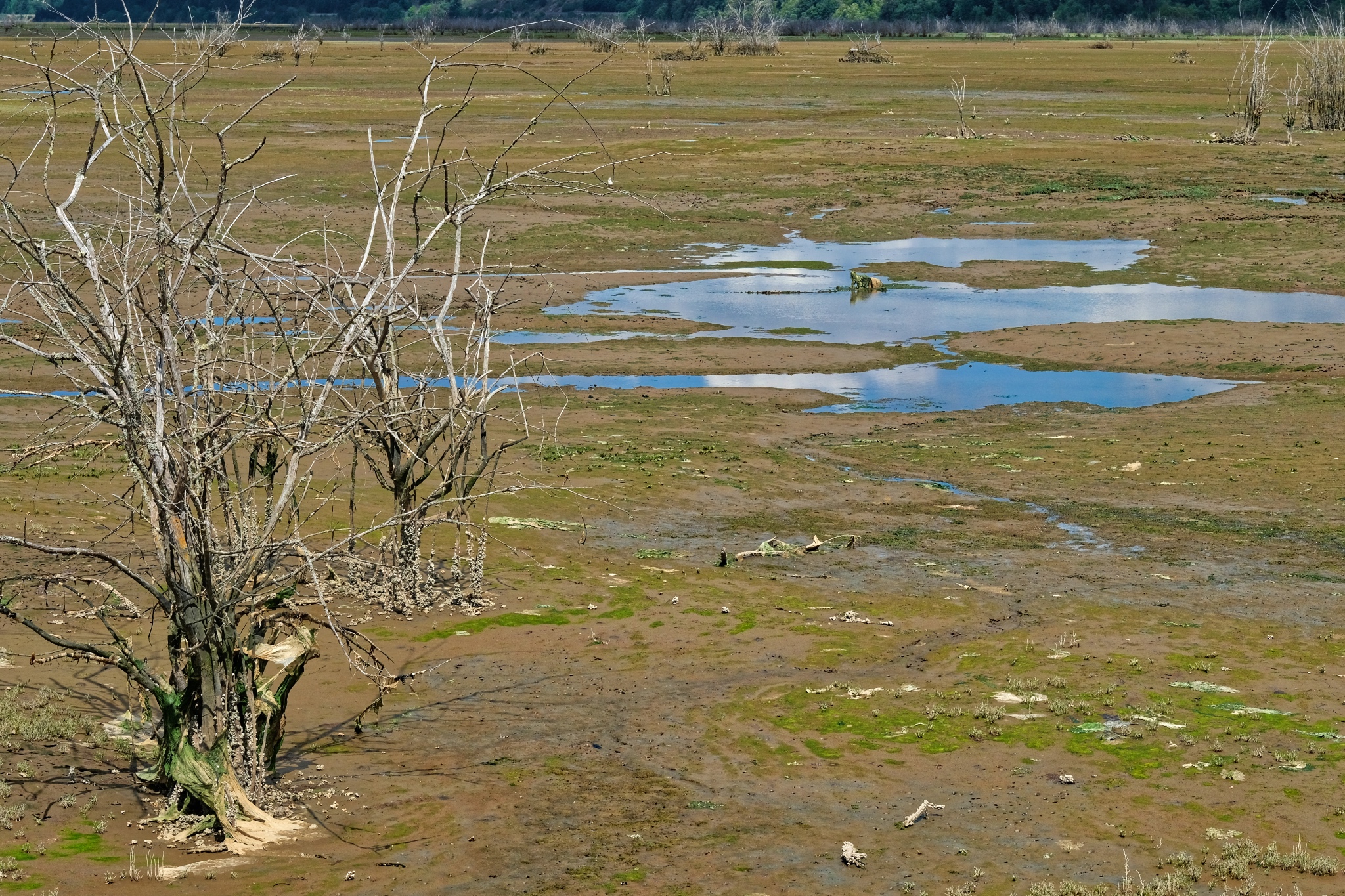 Sea water inundation into previously 'dry' areas.
Sea water inundation into previously 'dry' areas.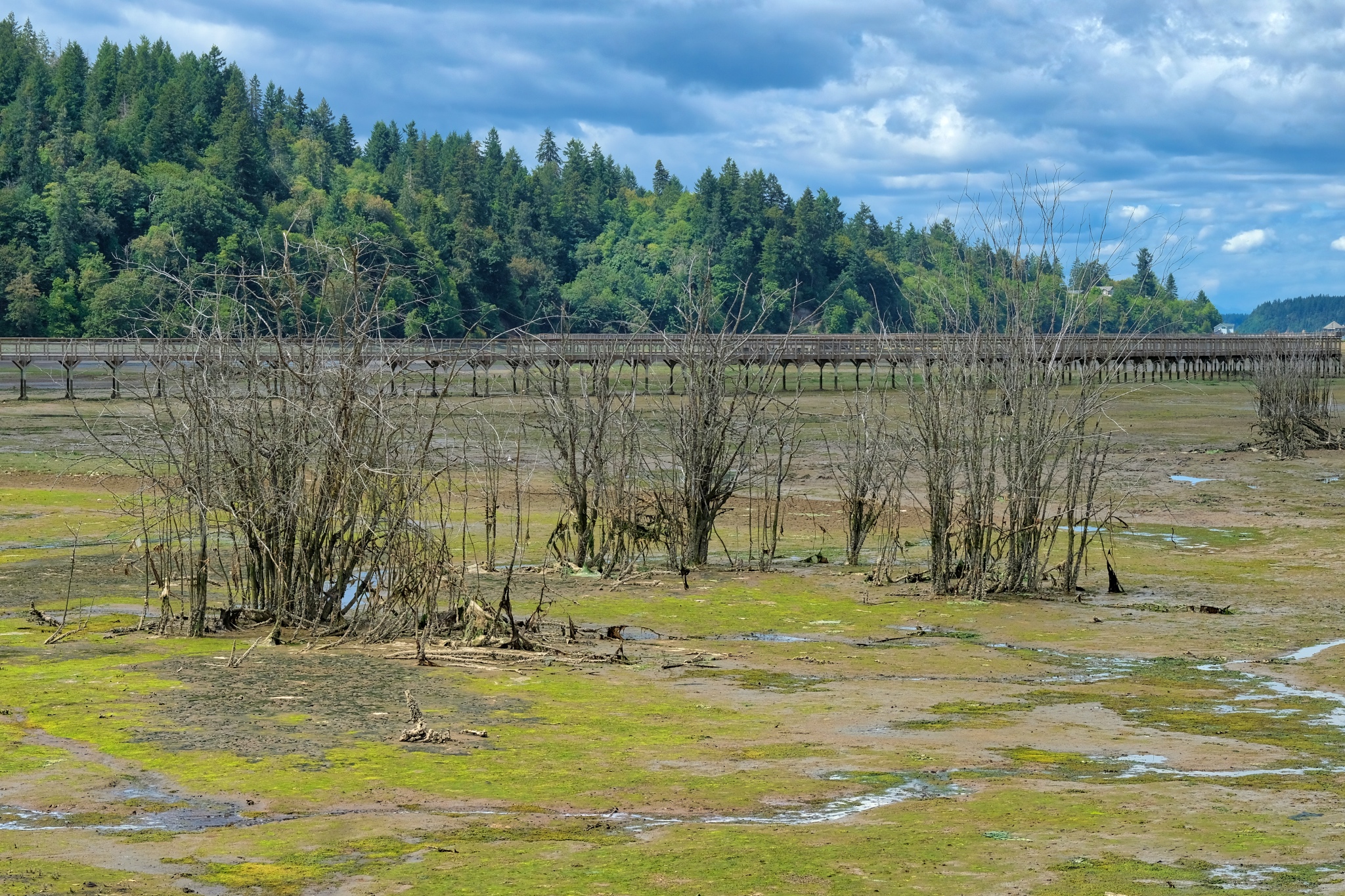 A new ecology is beginning to develop.
A new ecology is beginning to develop.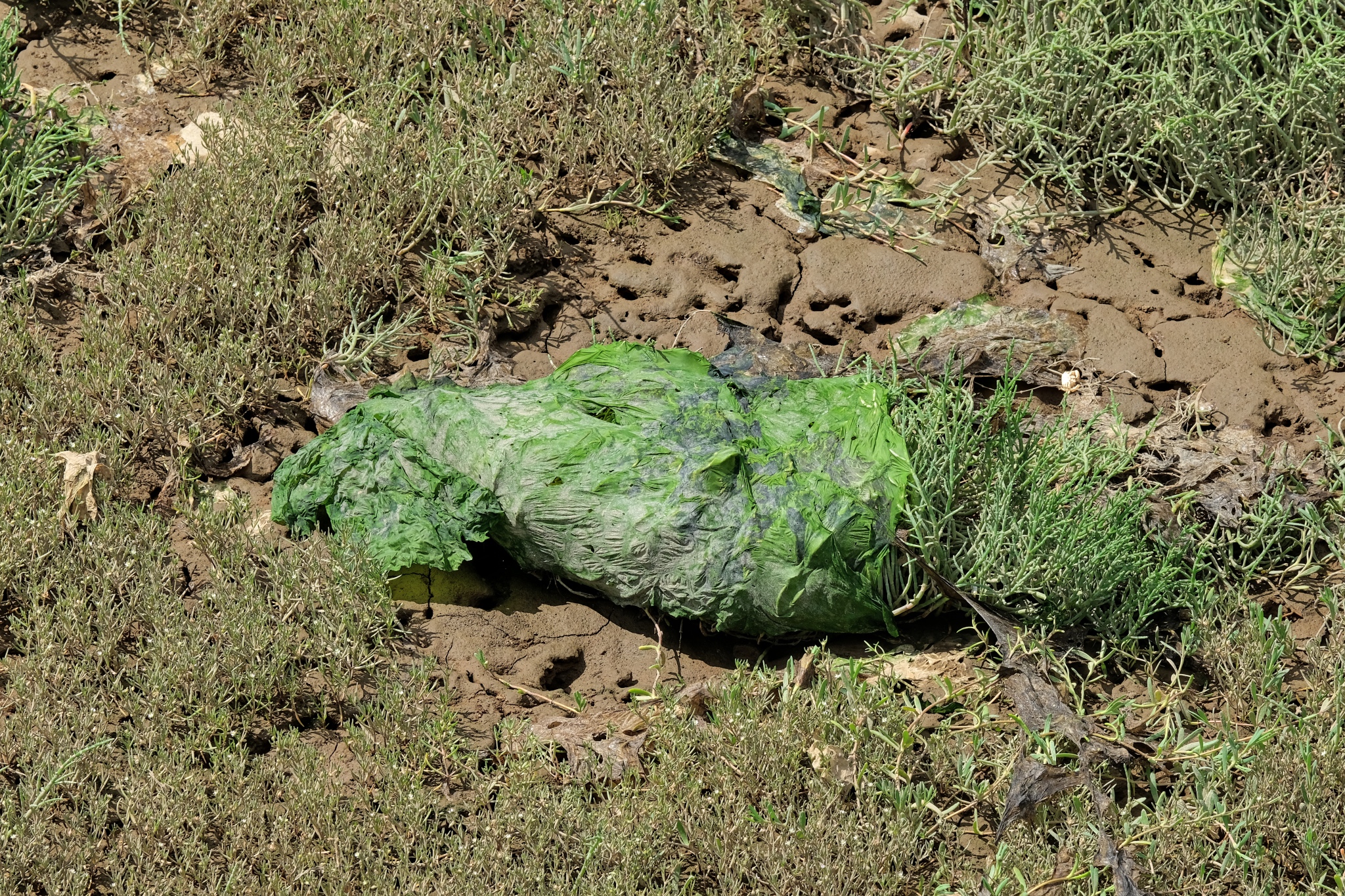 Altogether too much plastic. The Human Being!!!
Altogether too much plastic. The Human Being!!!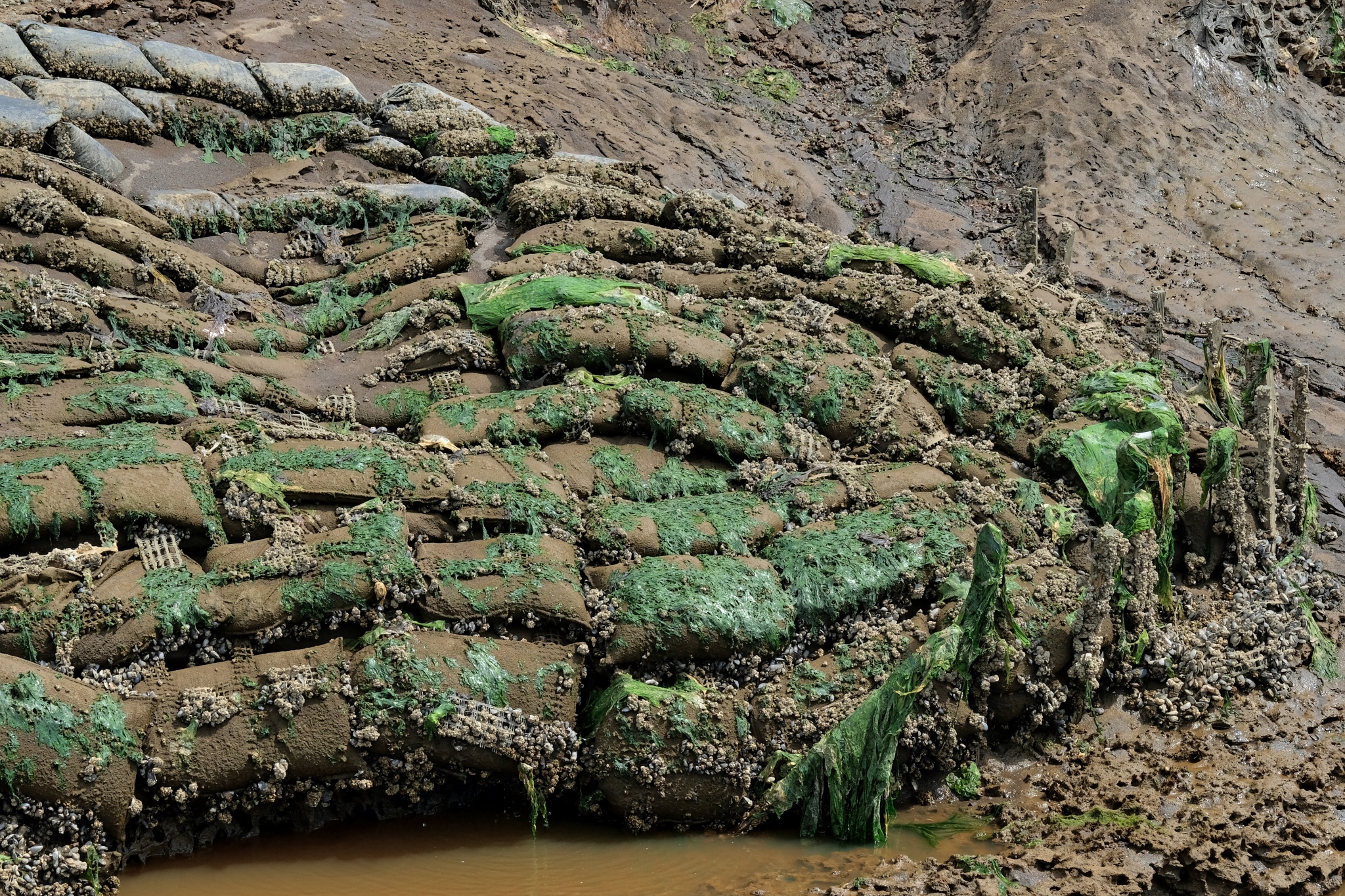 Here and there were sand bag earthworks to direct the drainage flow under the walkway to the Nisqually River.
Here and there were sand bag earthworks to direct the drainage flow under the walkway to the Nisqually River. I imagine this water redirection effort to save the walkway is a never-ending chore.
I imagine this water redirection effort to save the walkway is a never-ending chore.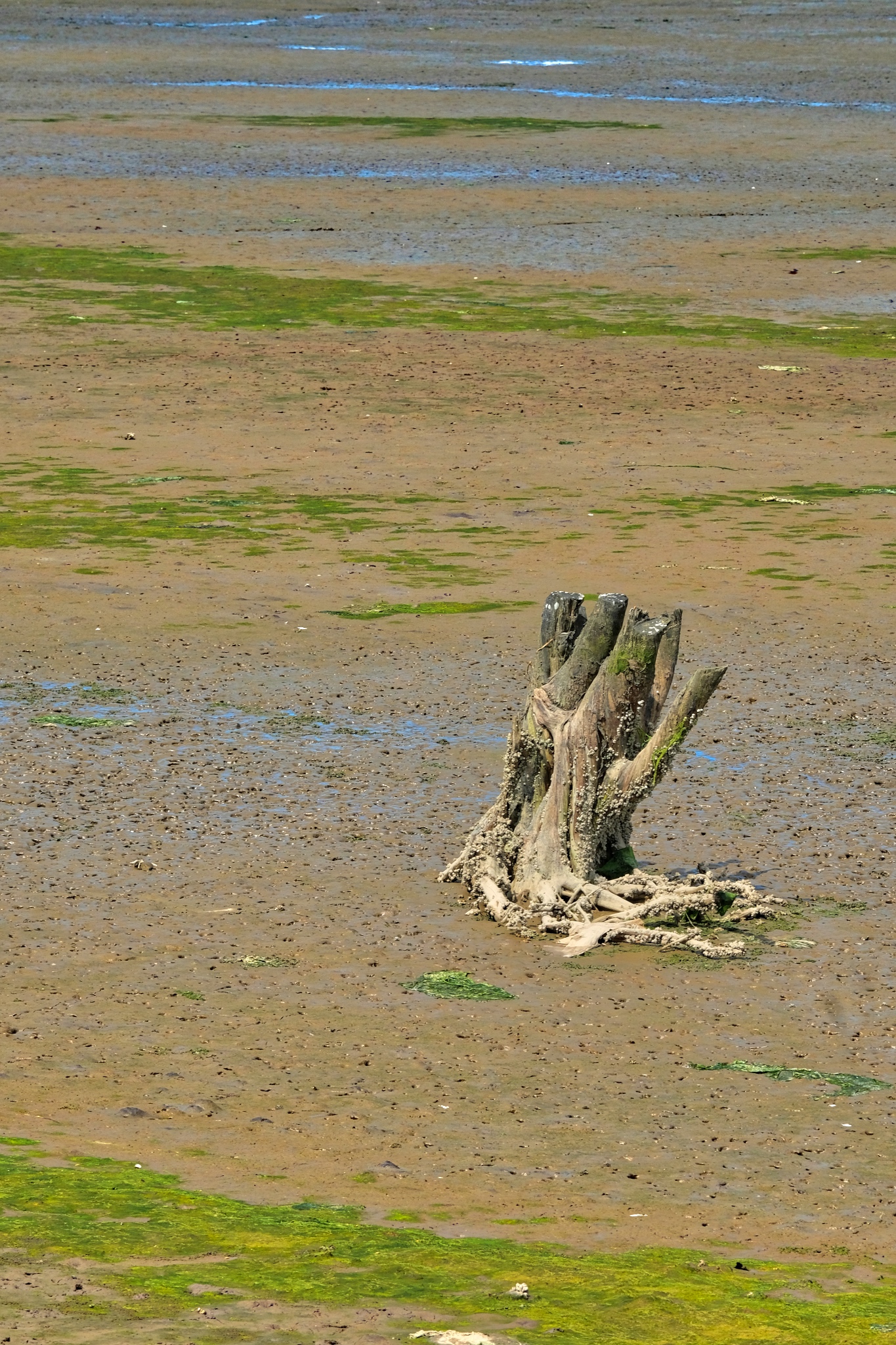 Stumps washed down the river when it raged in winter.
Stumps washed down the river when it raged in winter.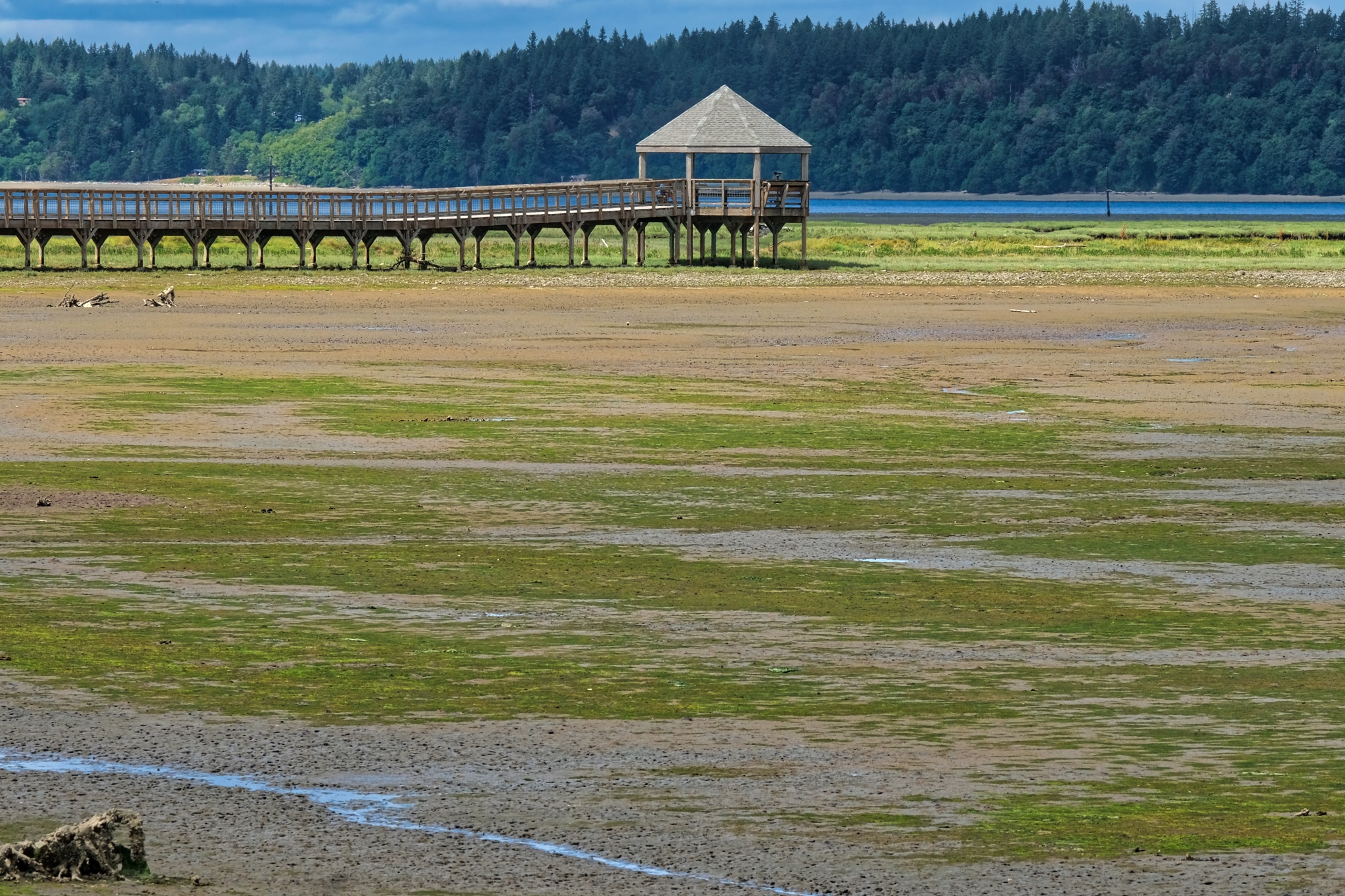 My ultimate goal, and the terminus of the walkway, was several miles from dry land!
My ultimate goal, and the terminus of the walkway, was several miles from dry land! The final observation pavilion was not too far from the actual Puget Sound.
The final observation pavilion was not too far from the actual Puget Sound.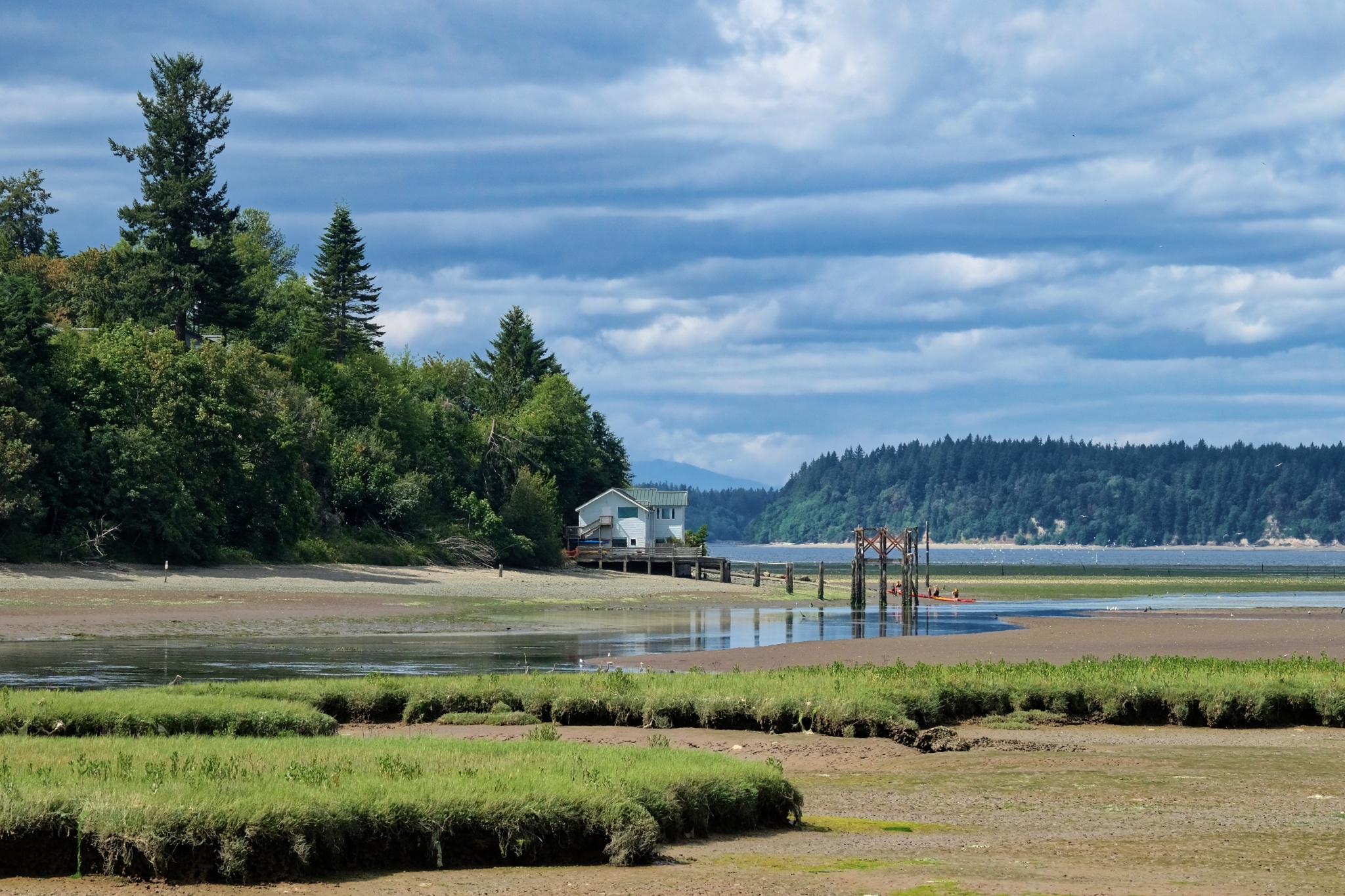
The view from the last observation pavilion.
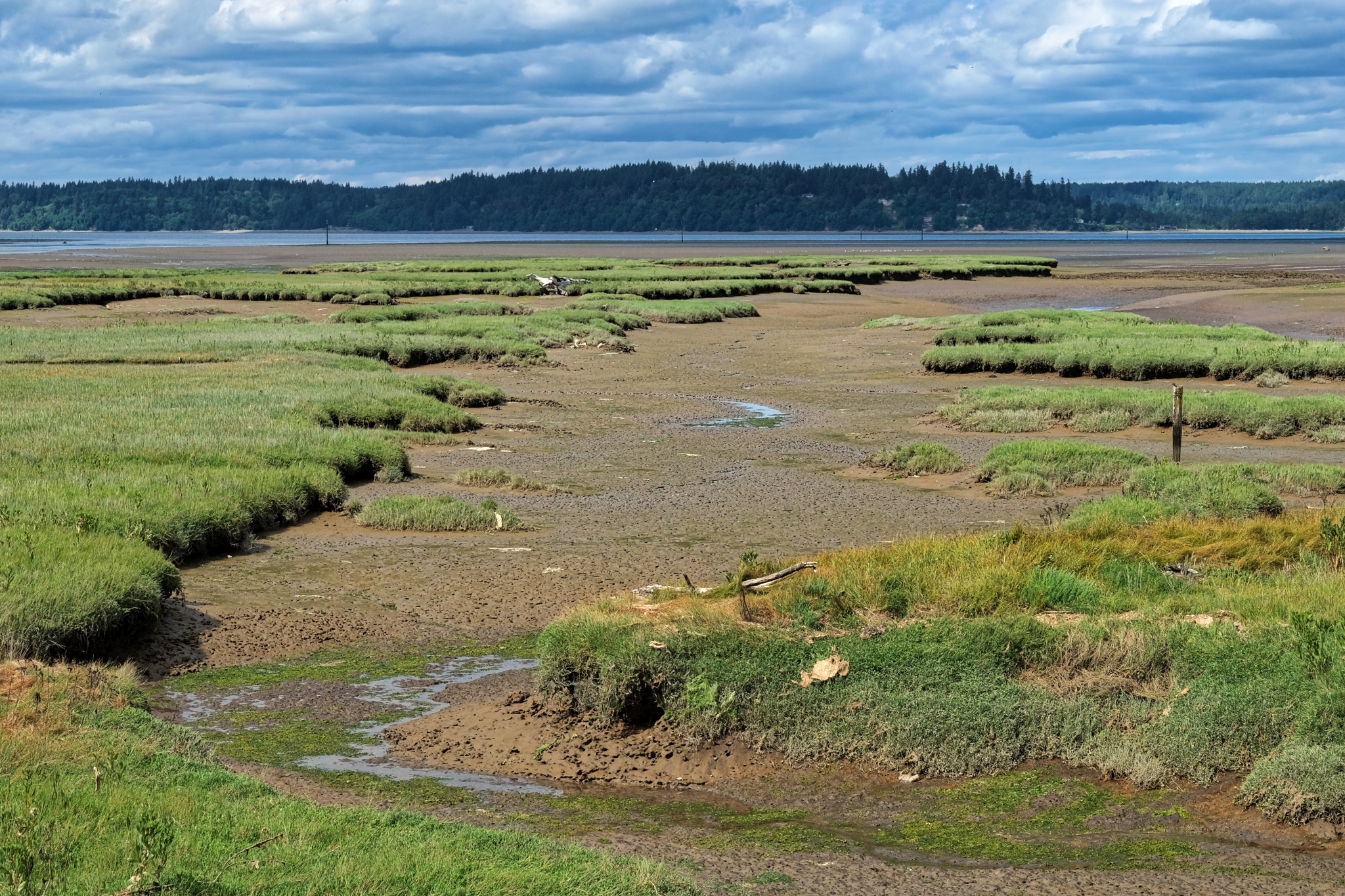 Puget Sound in the background.
Puget Sound in the background. It was a beautiful day to be out in the world . . . making the most of the supramundane.
It was a beautiful day to be out in the world . . . making the most of the supramundane.
Reader Comments